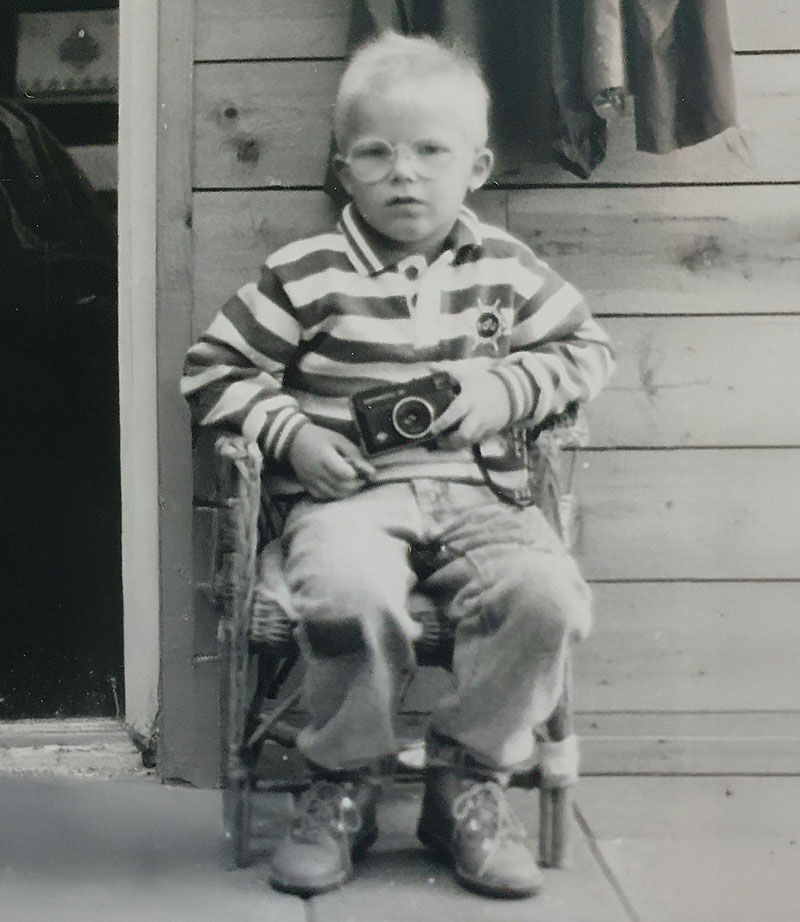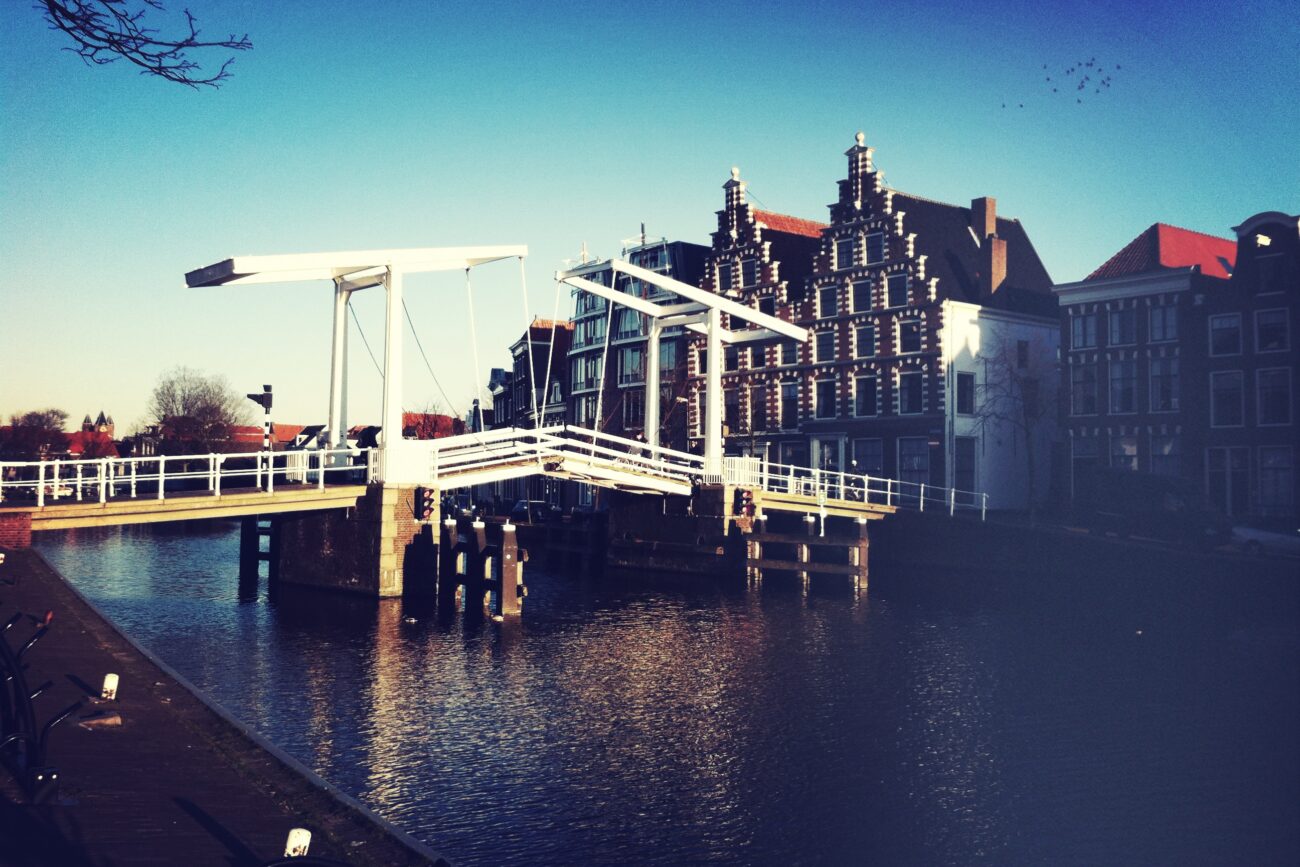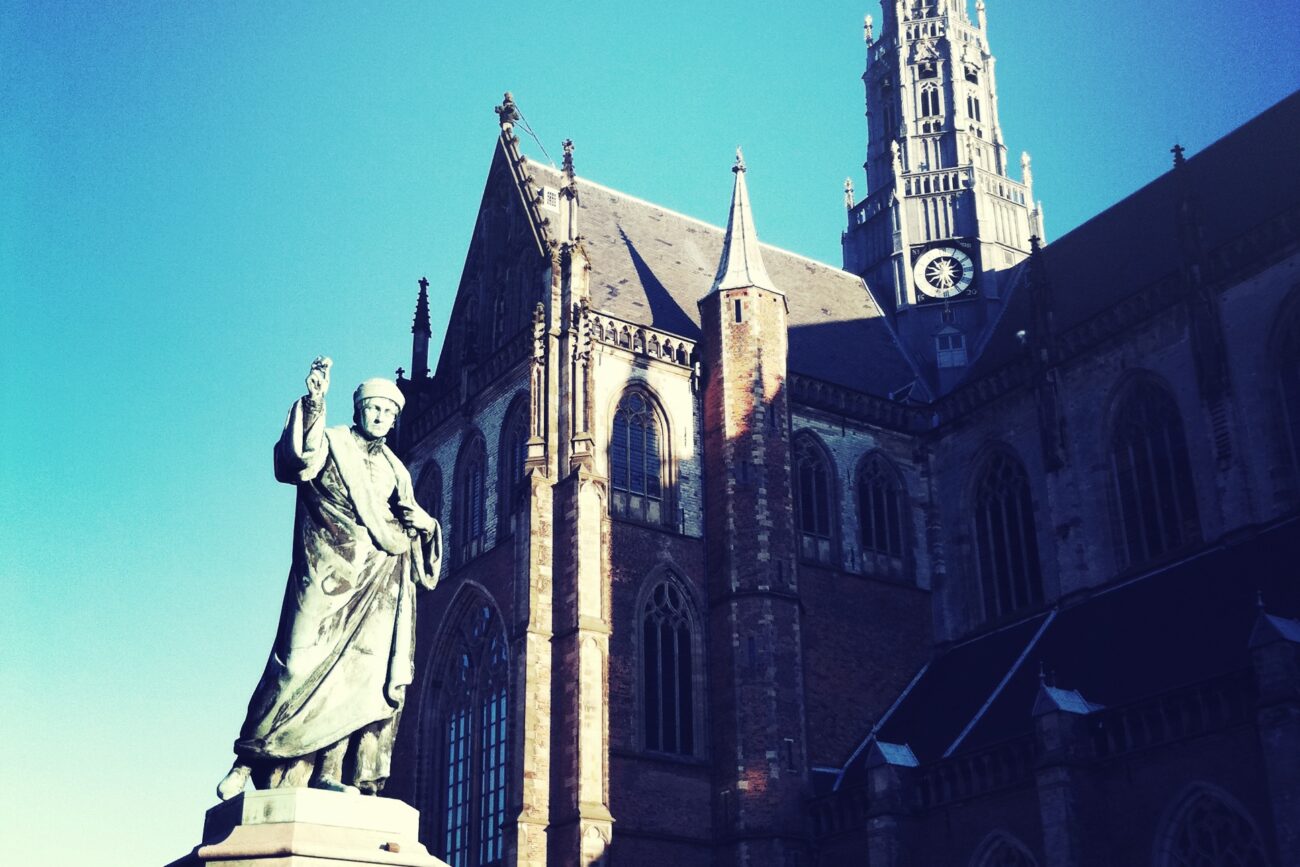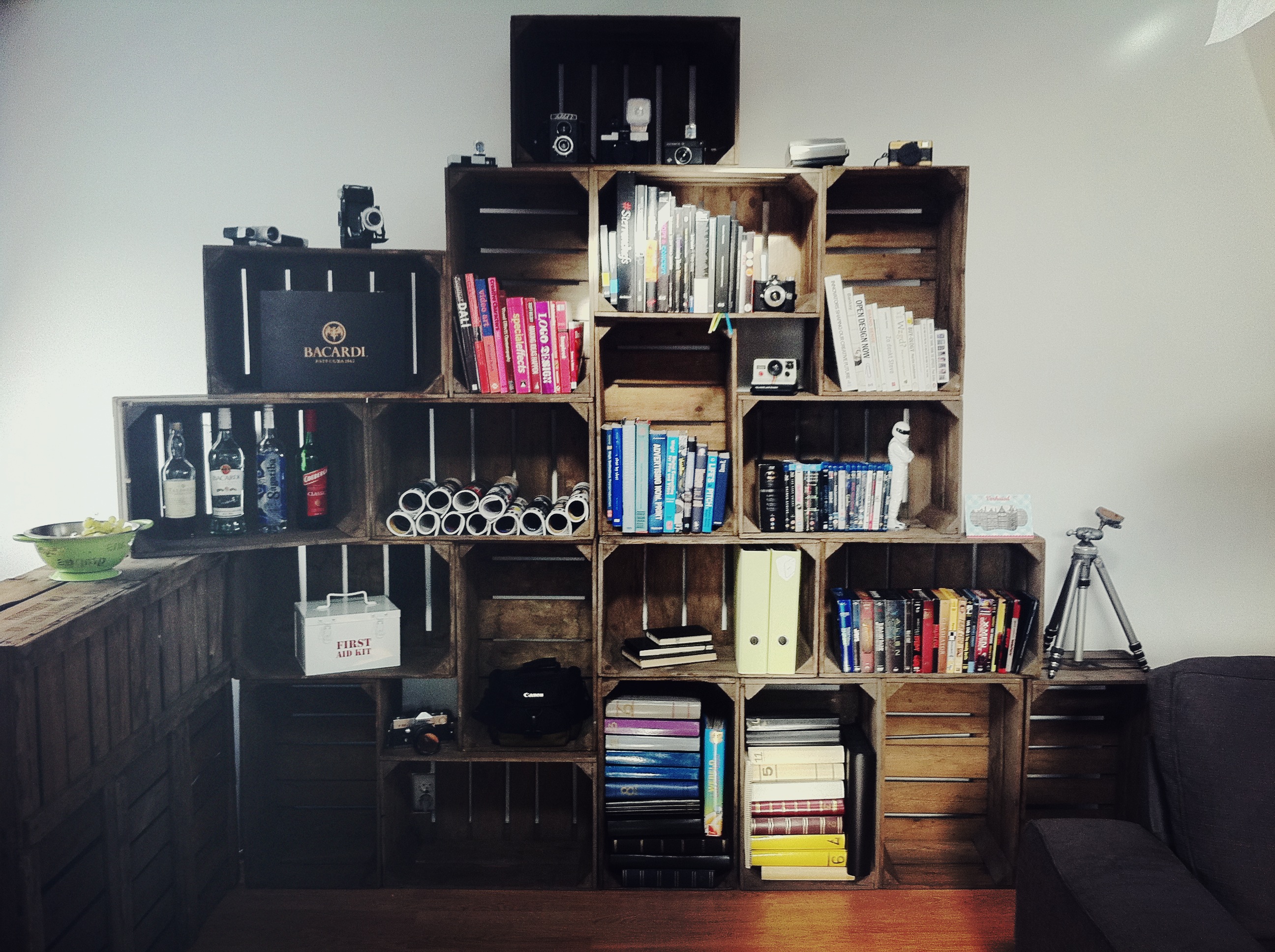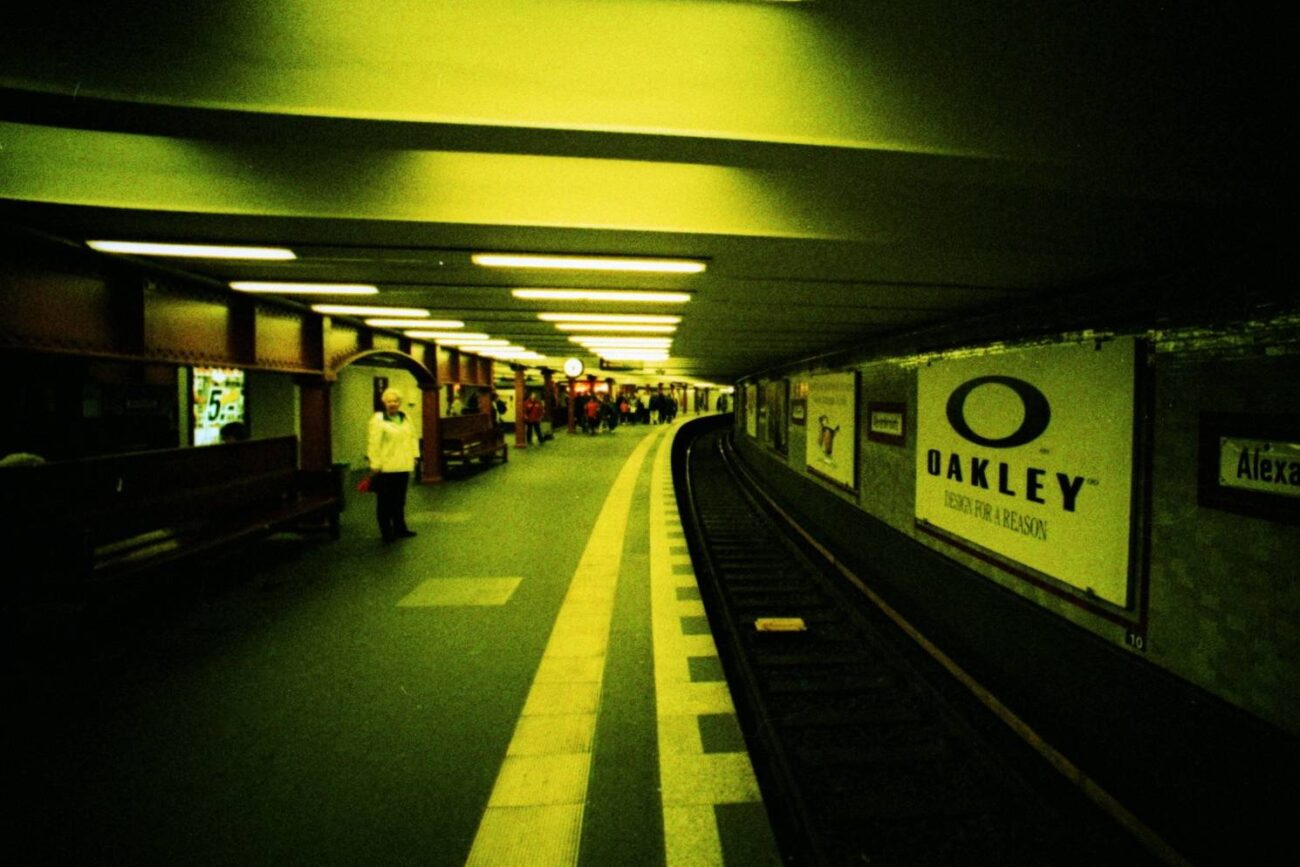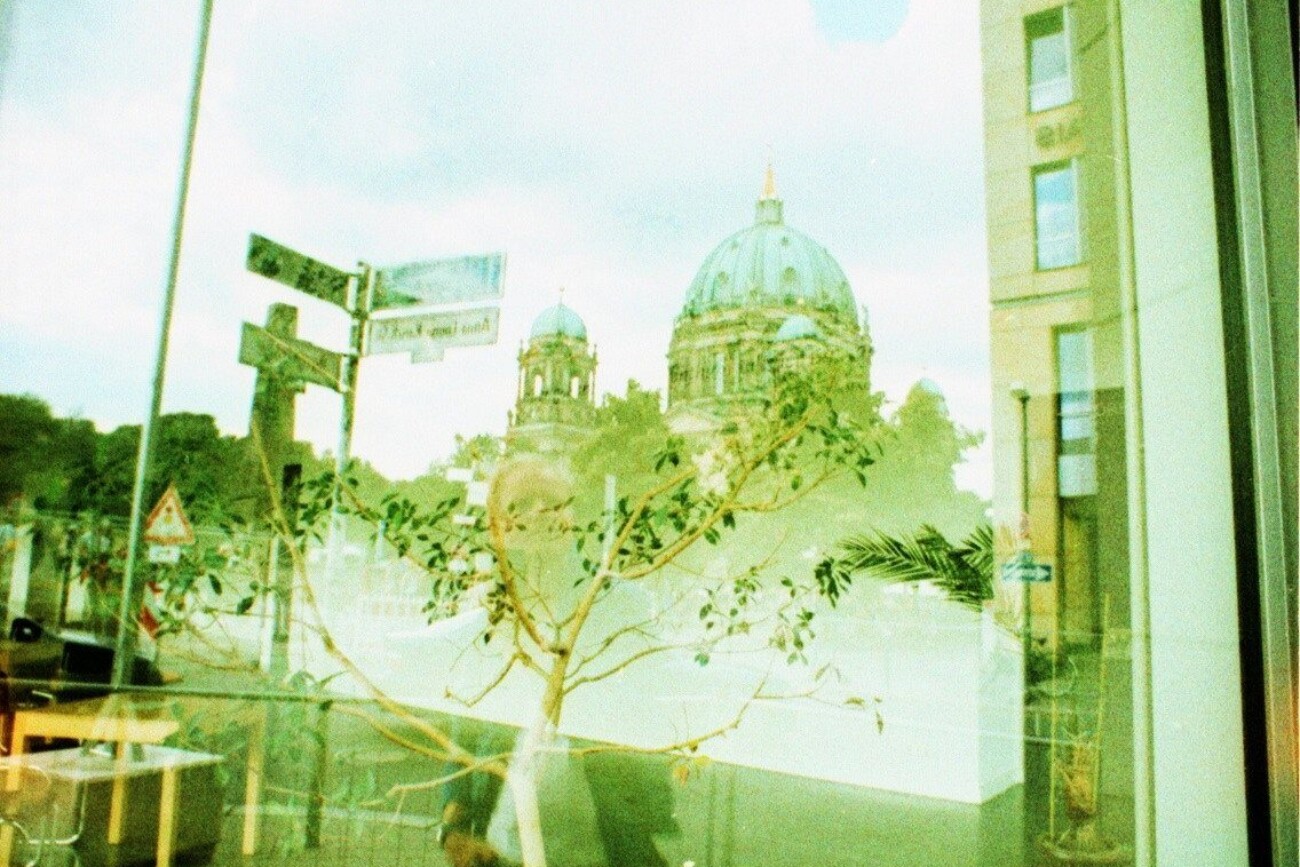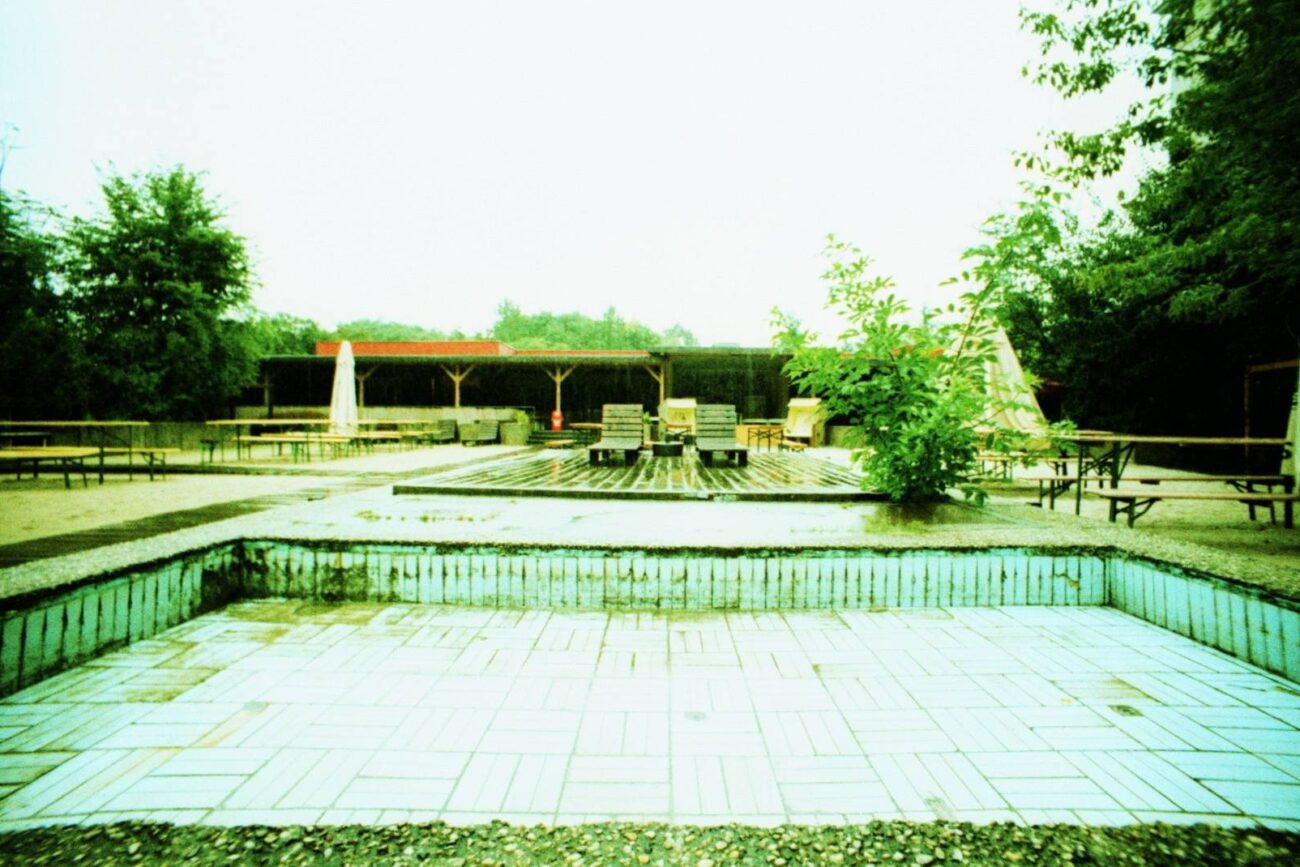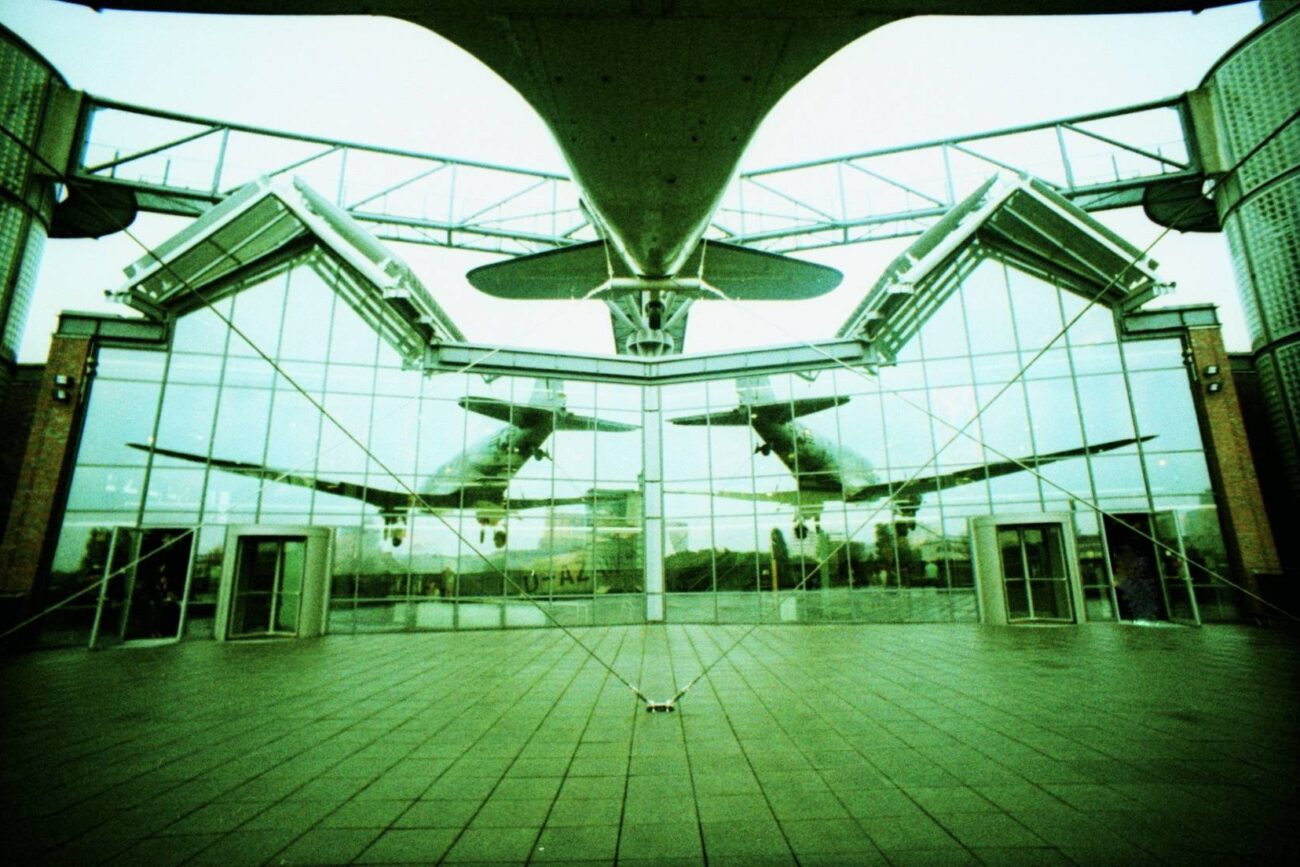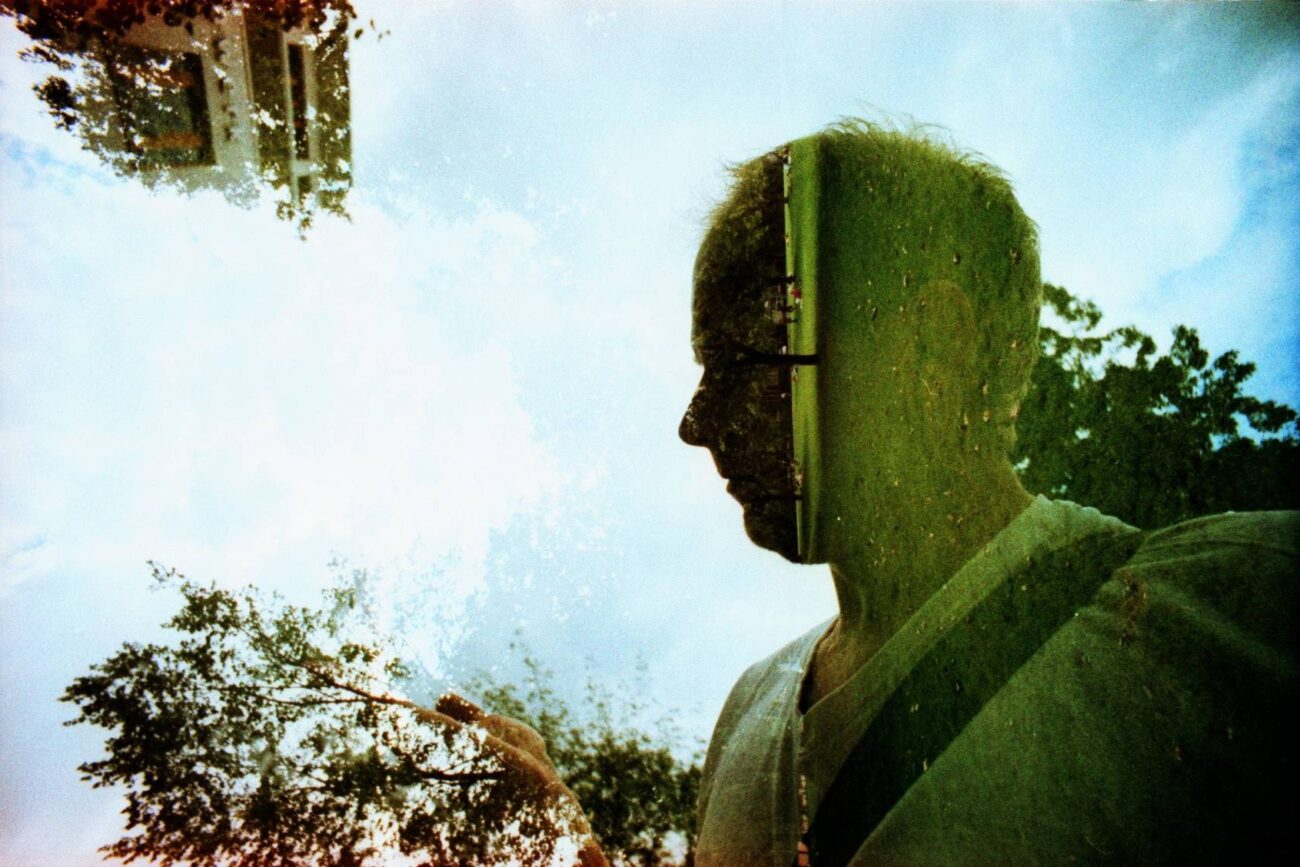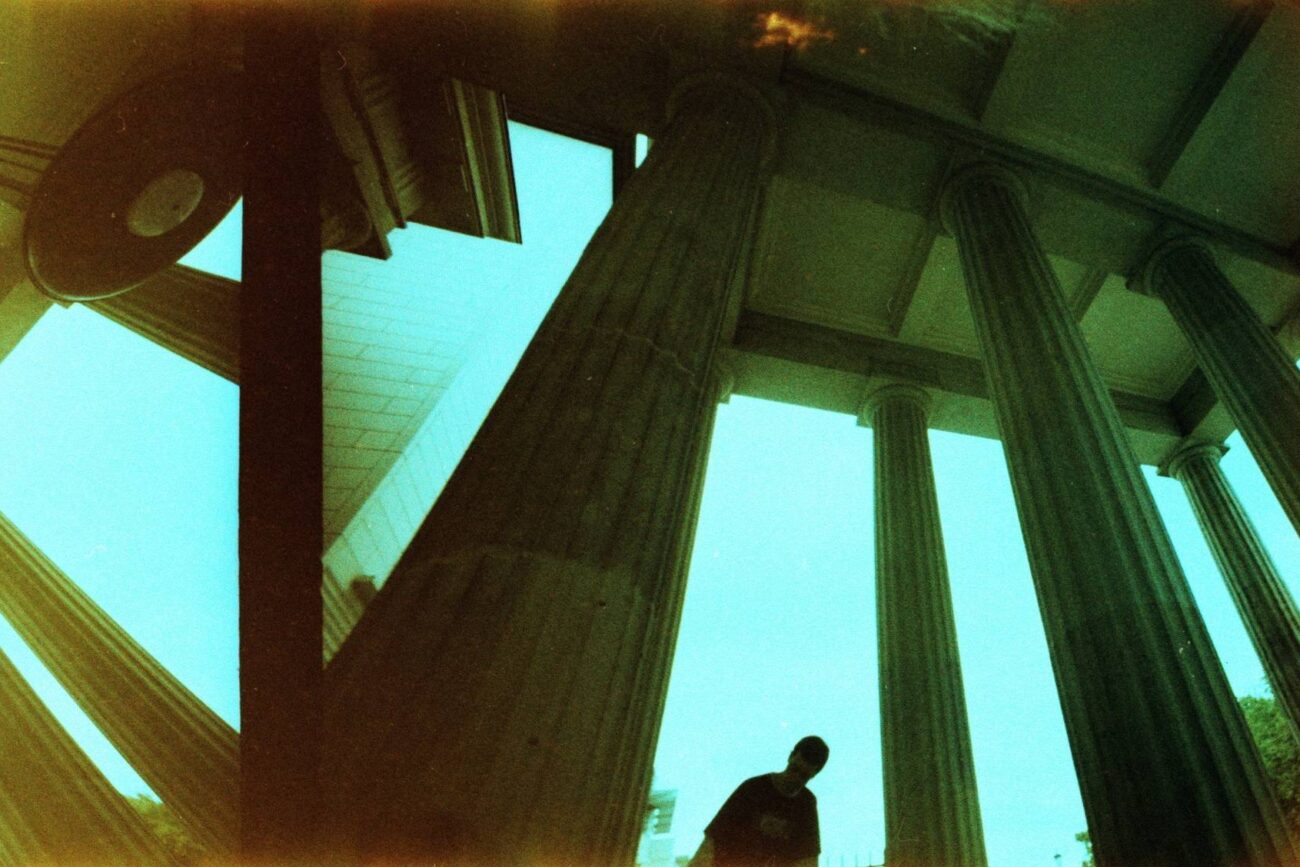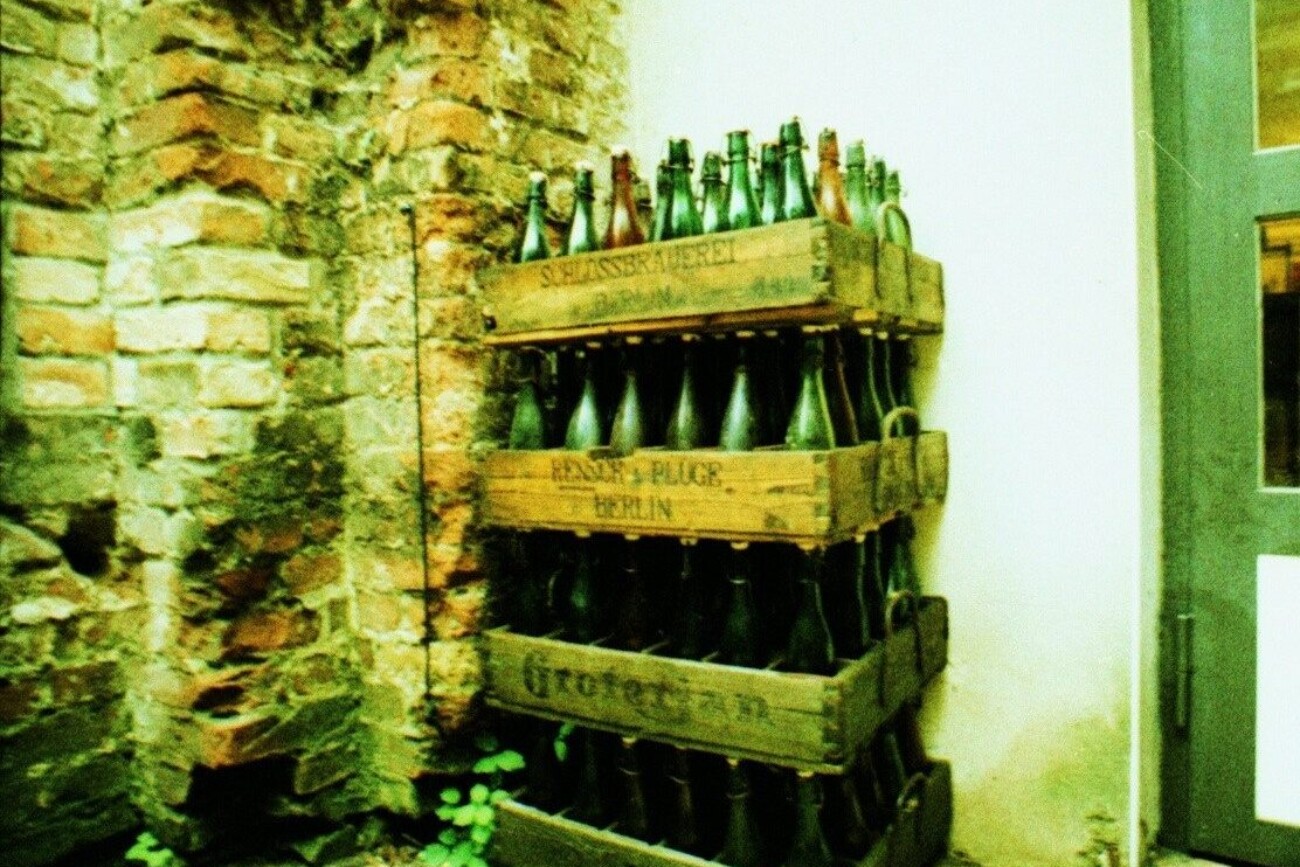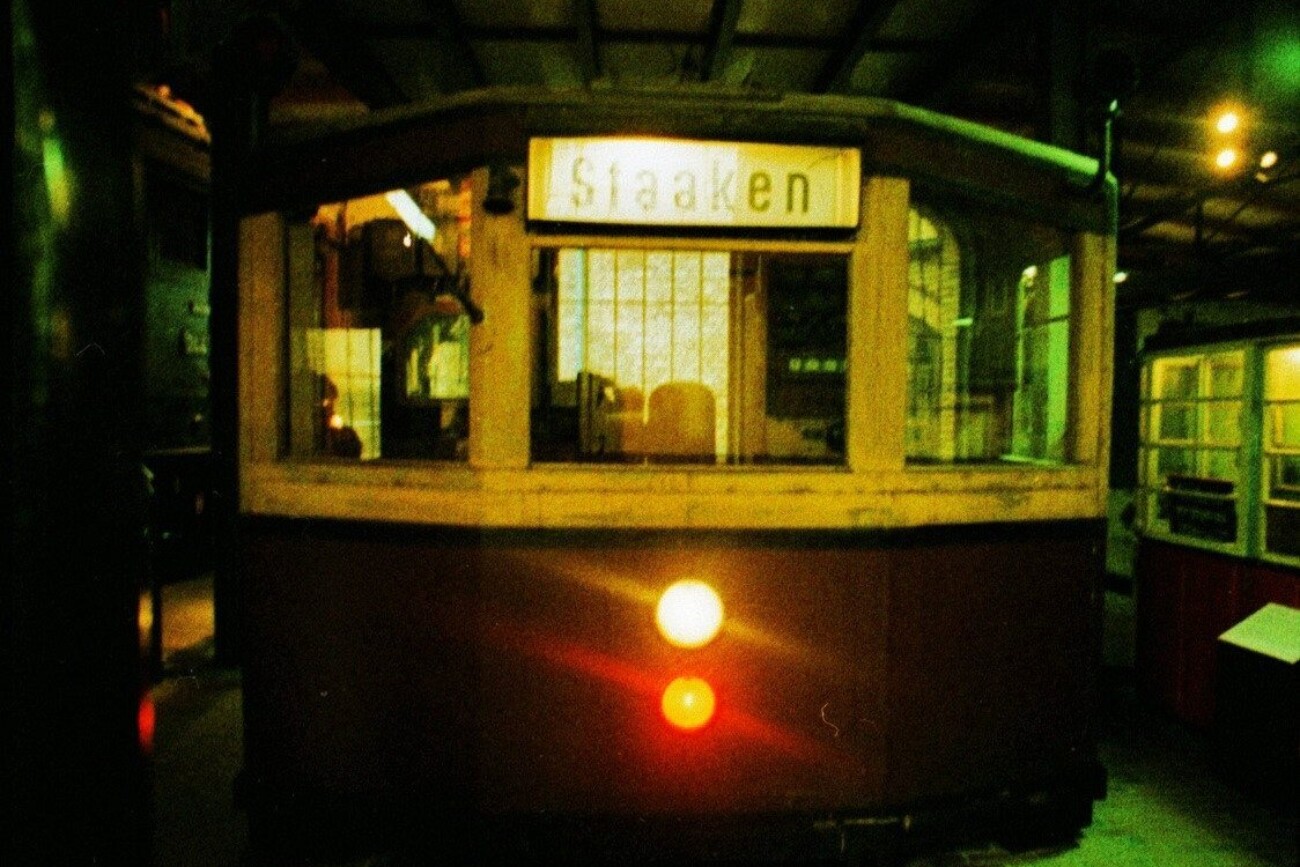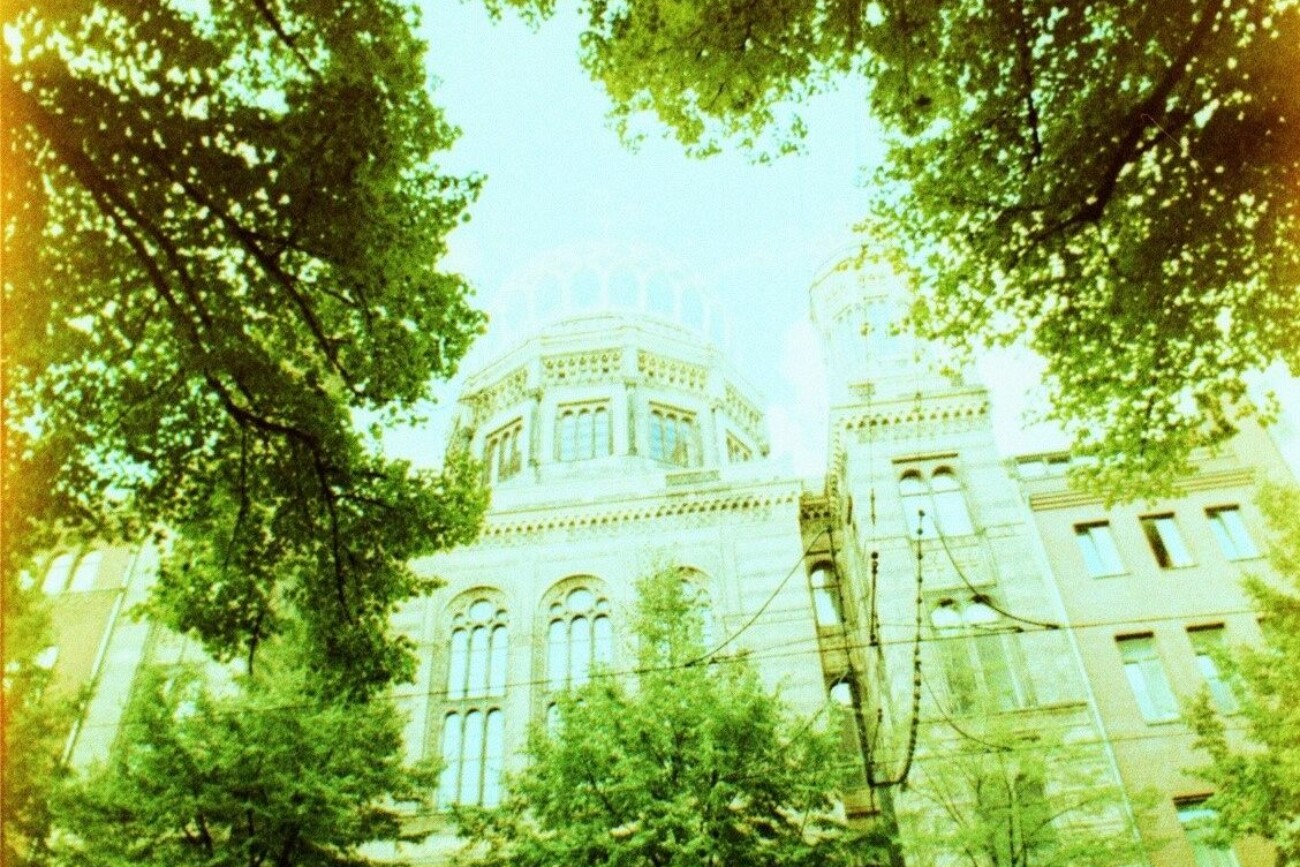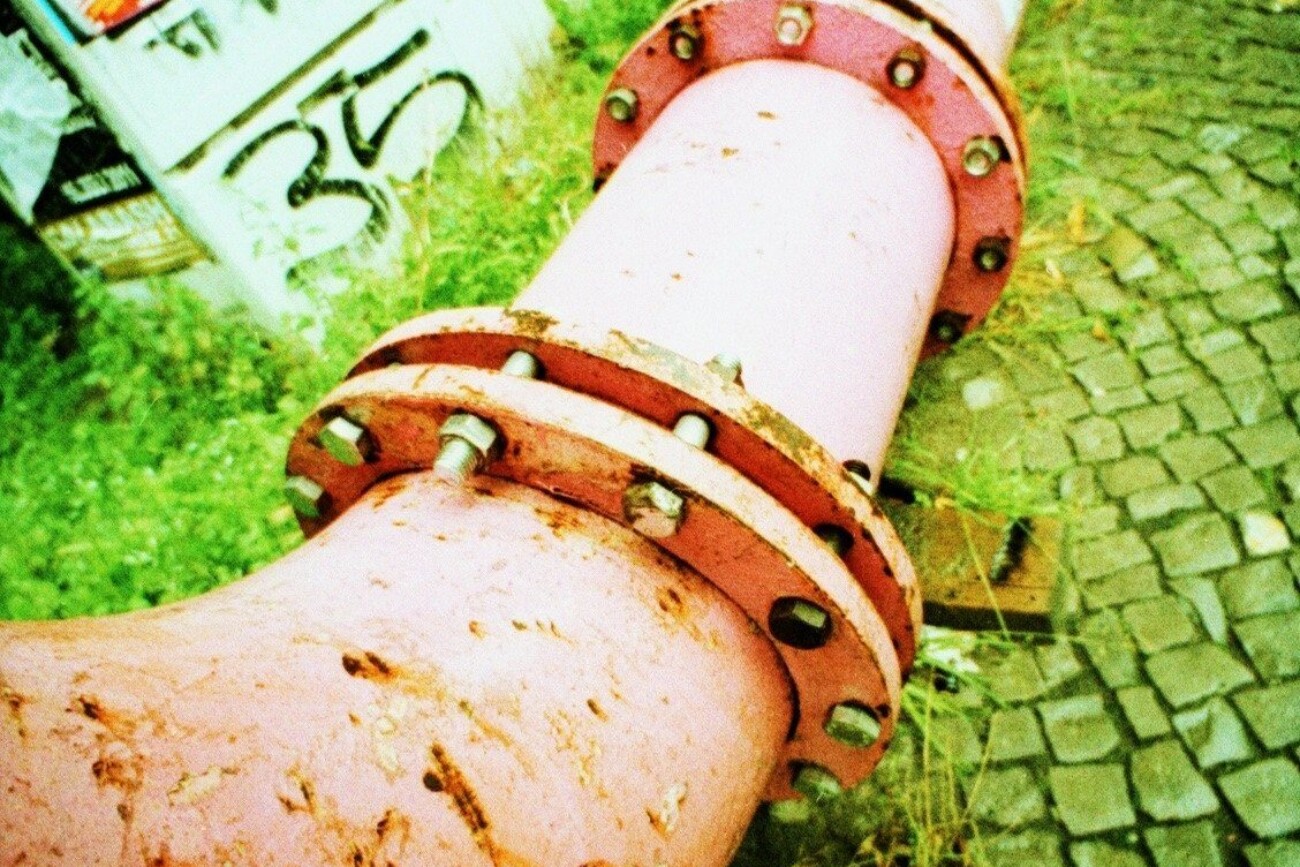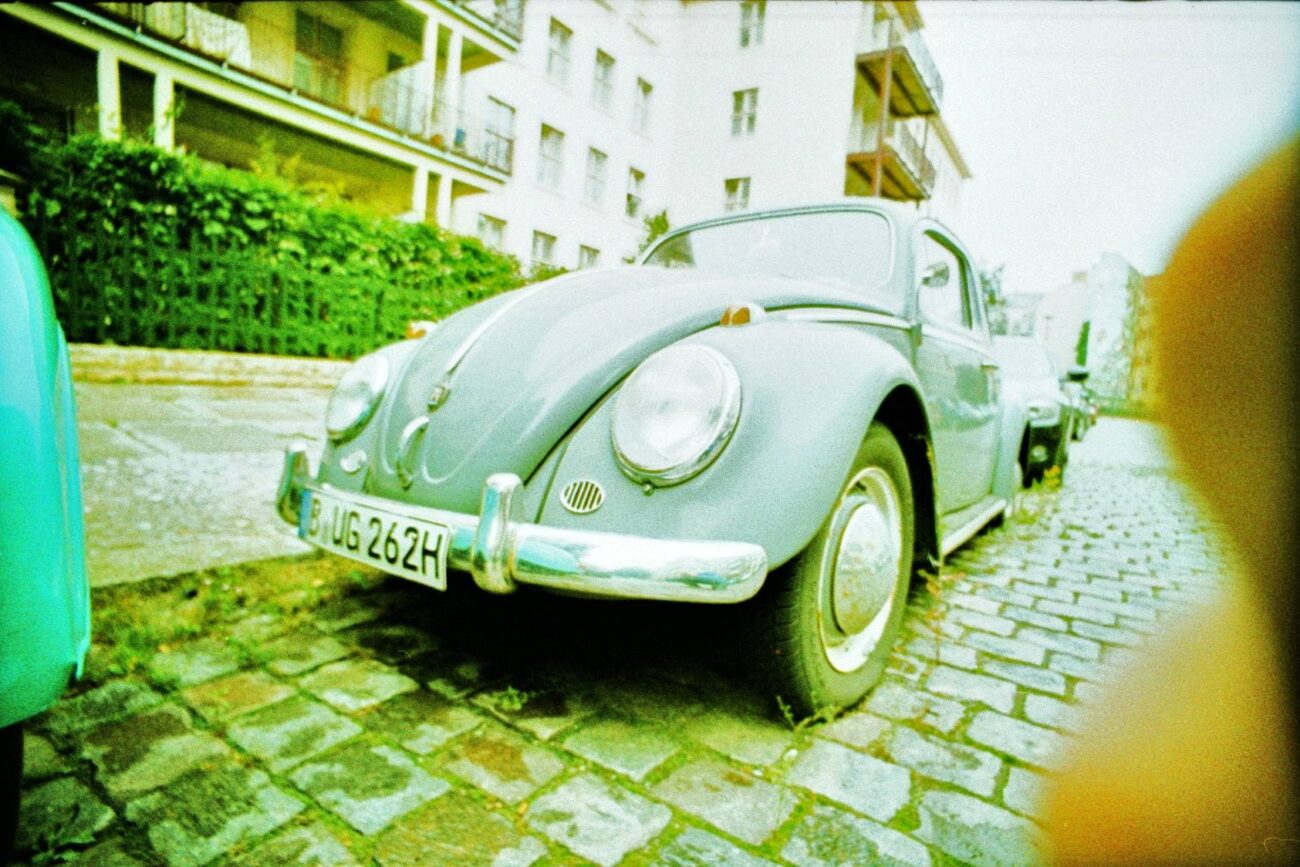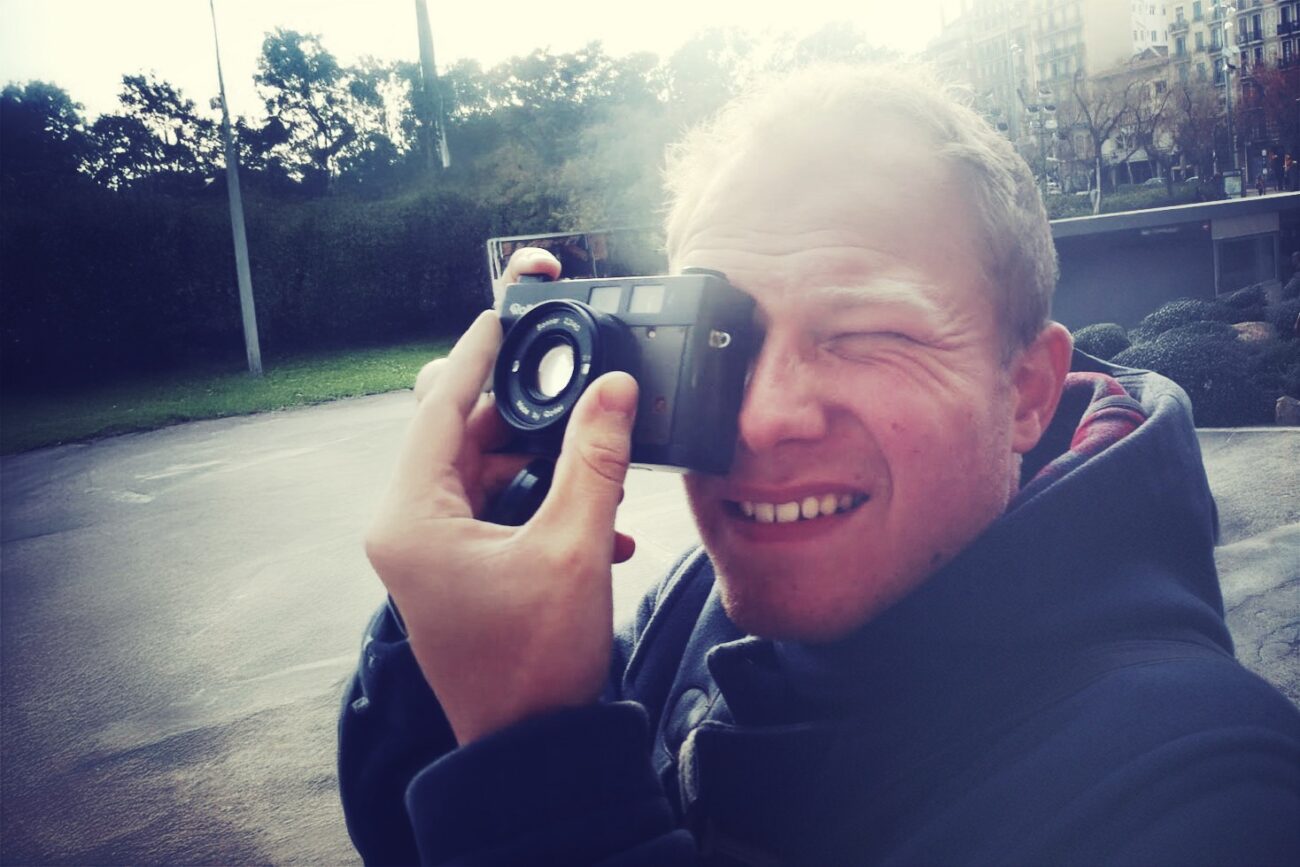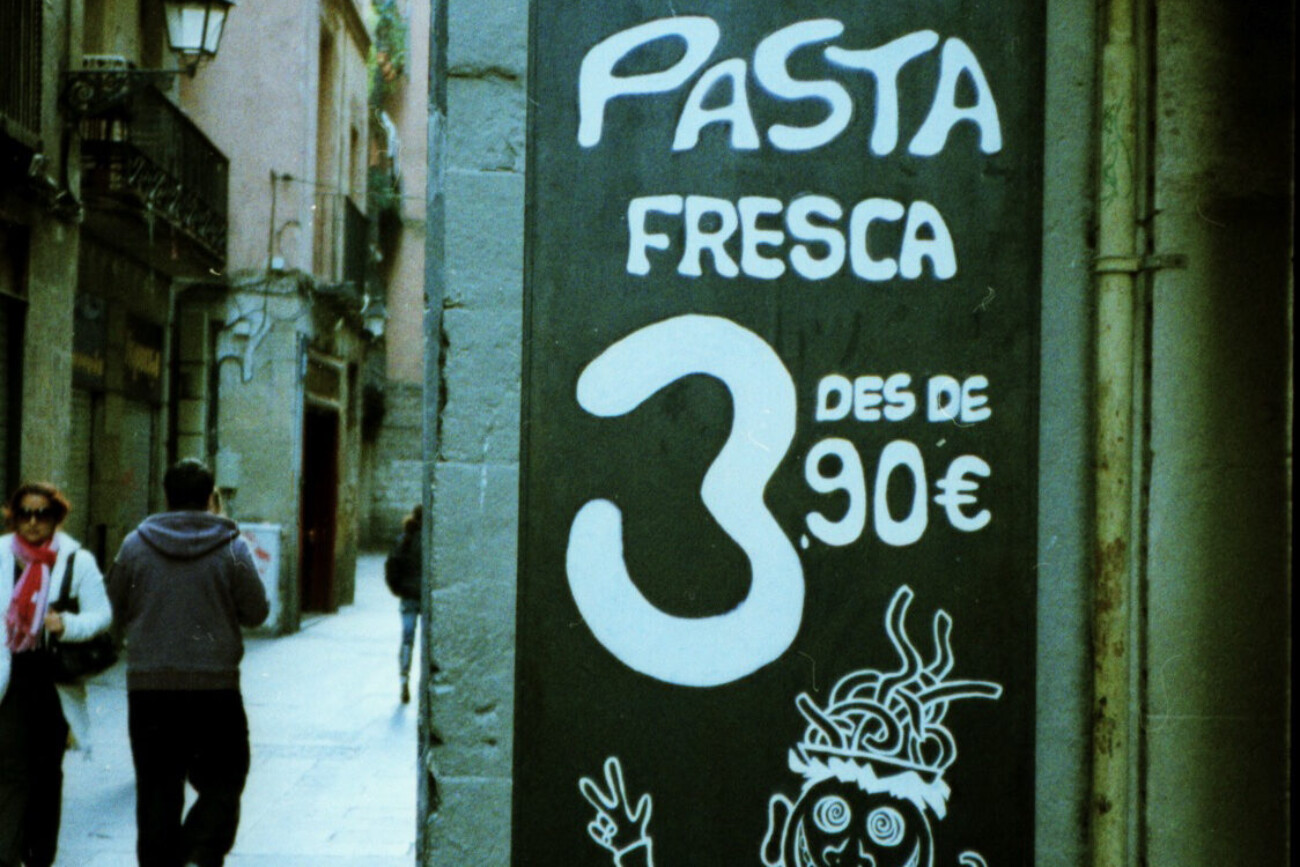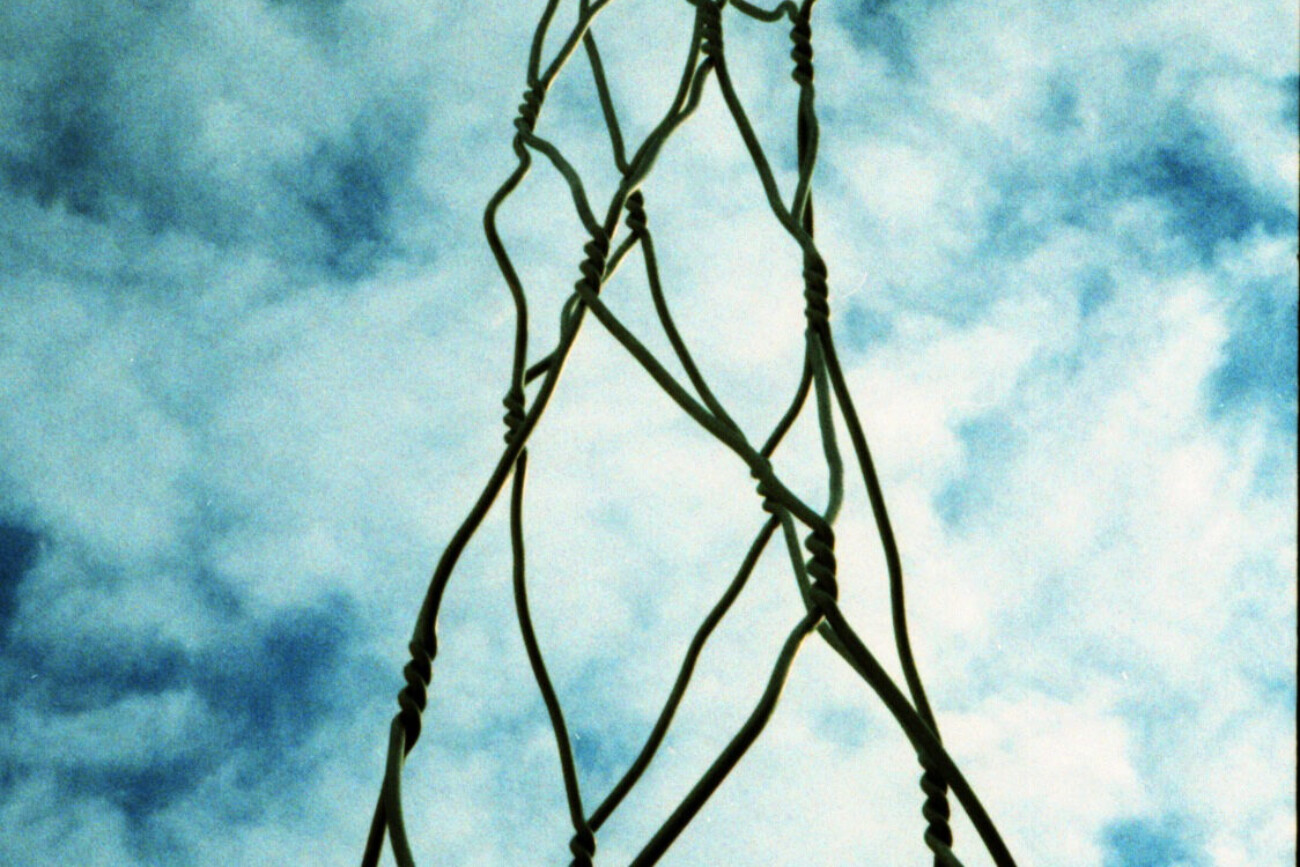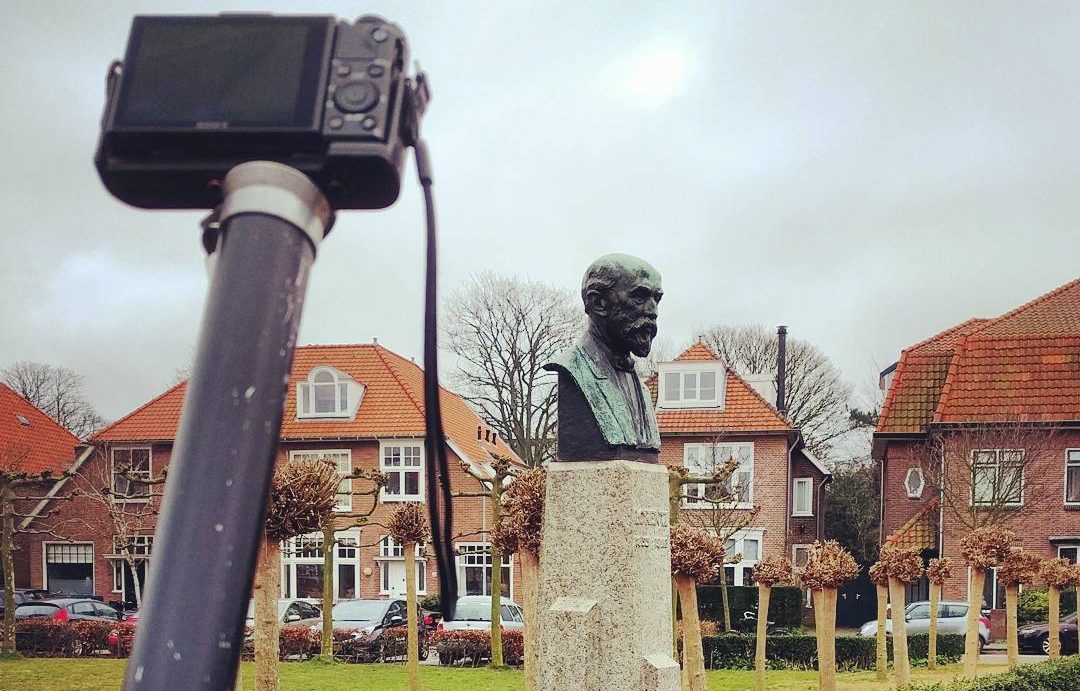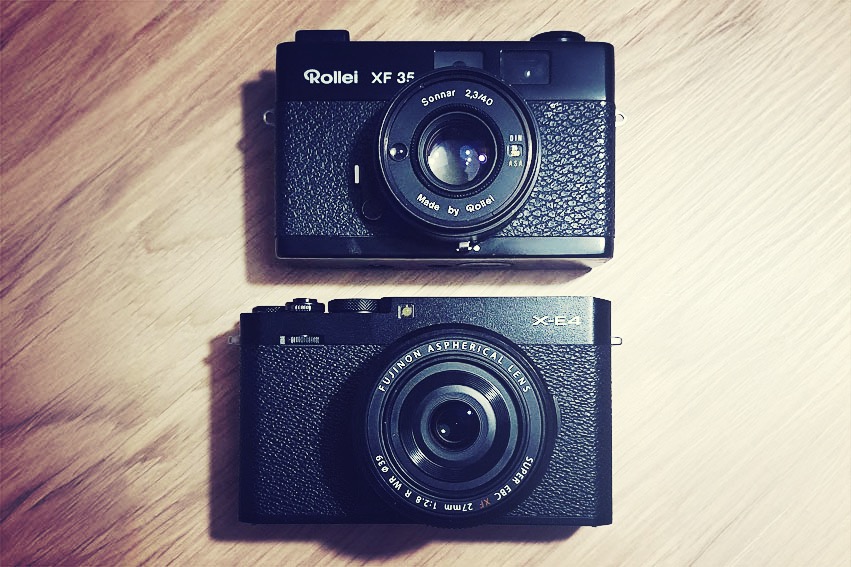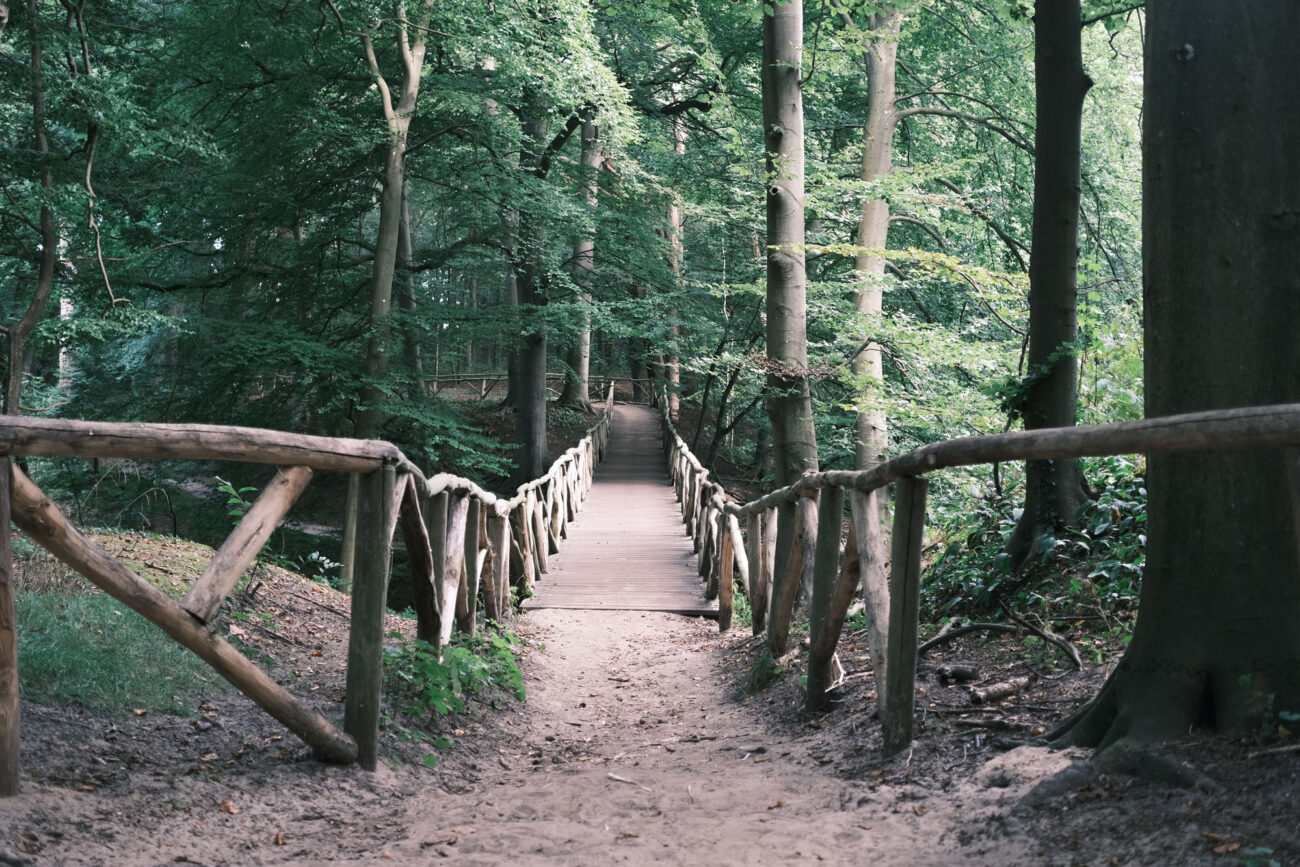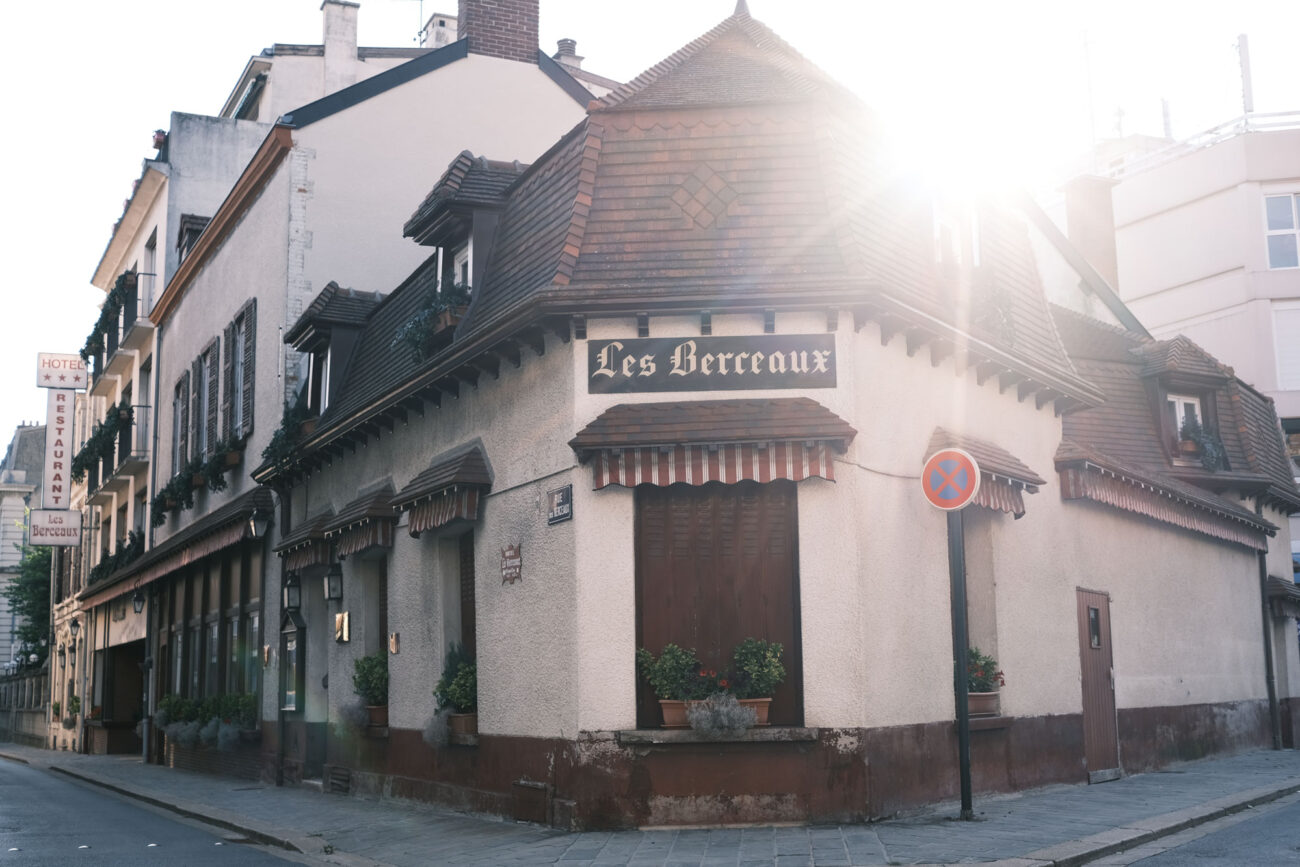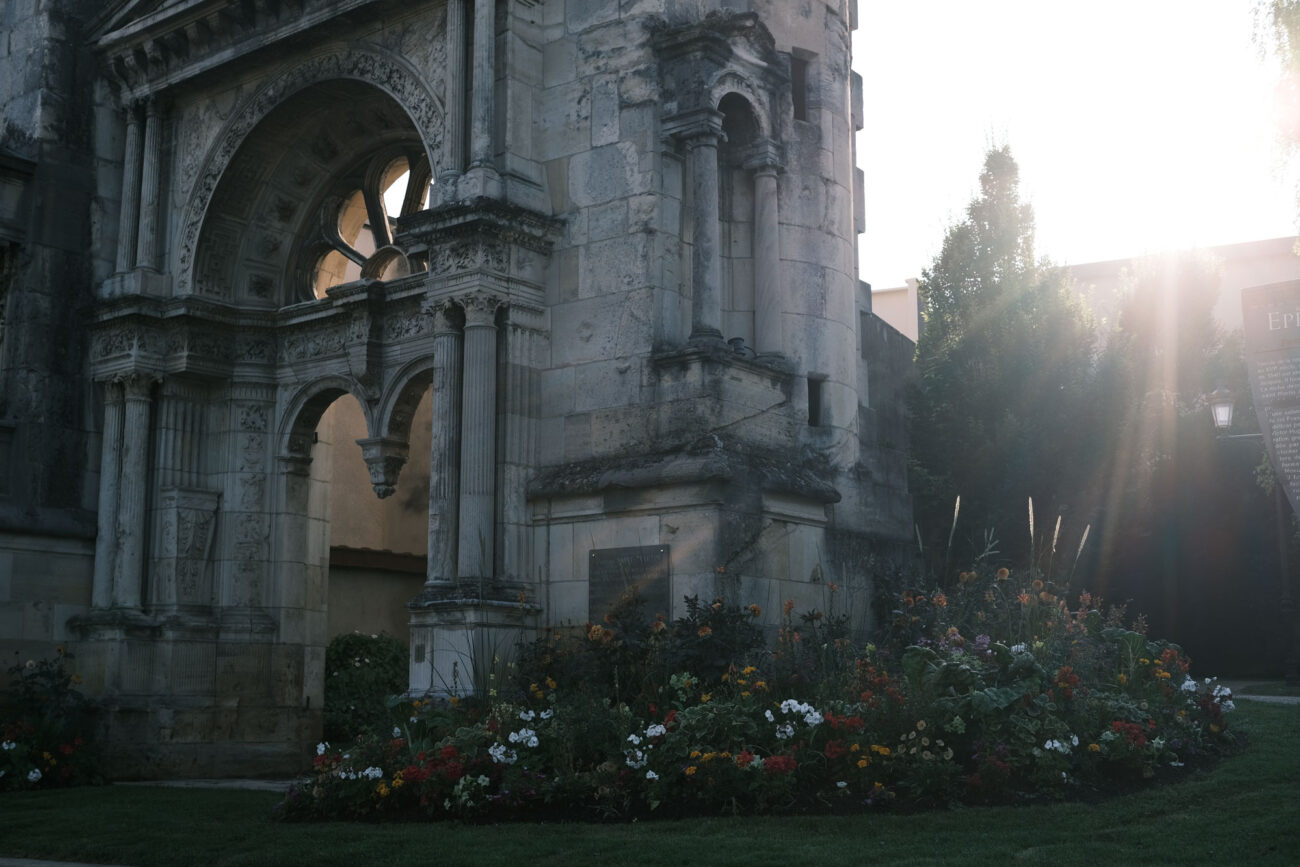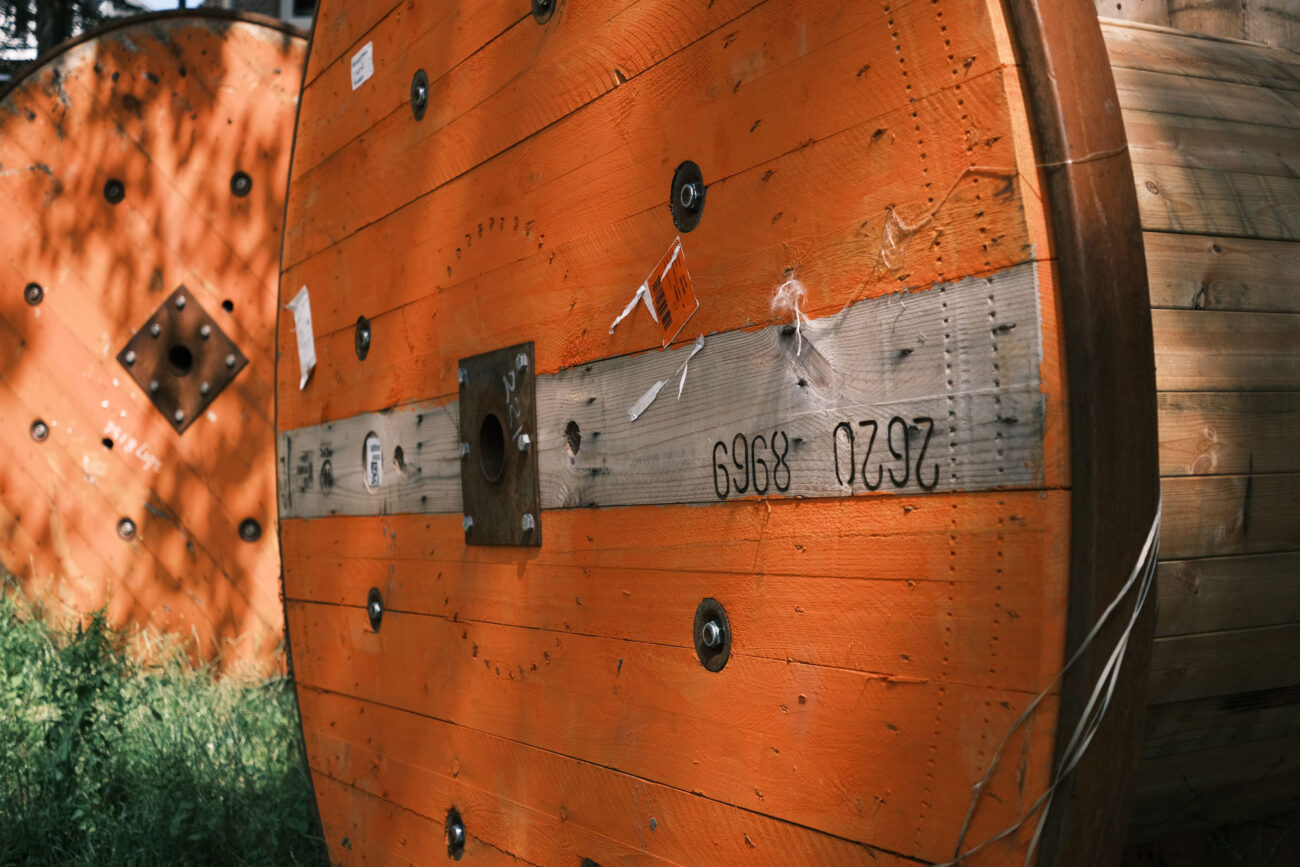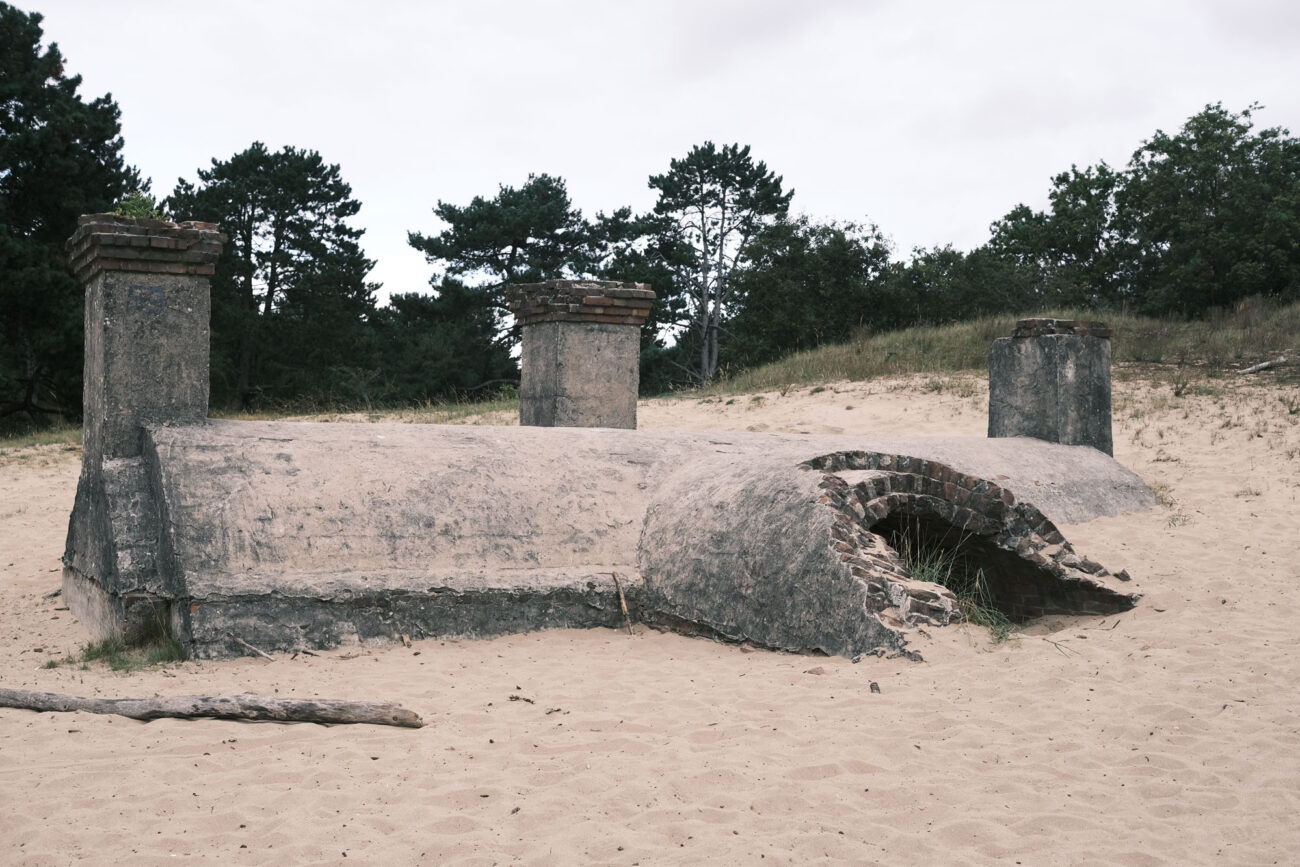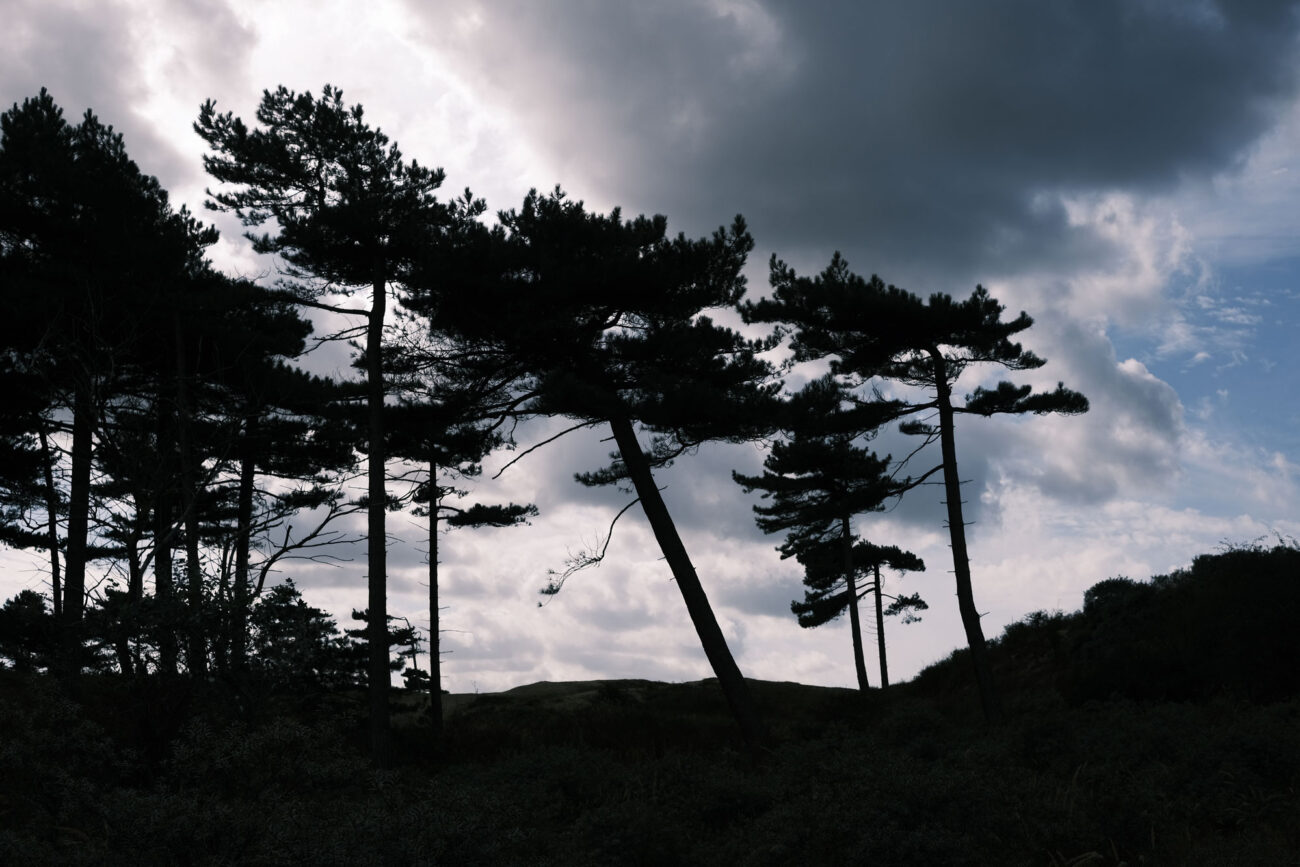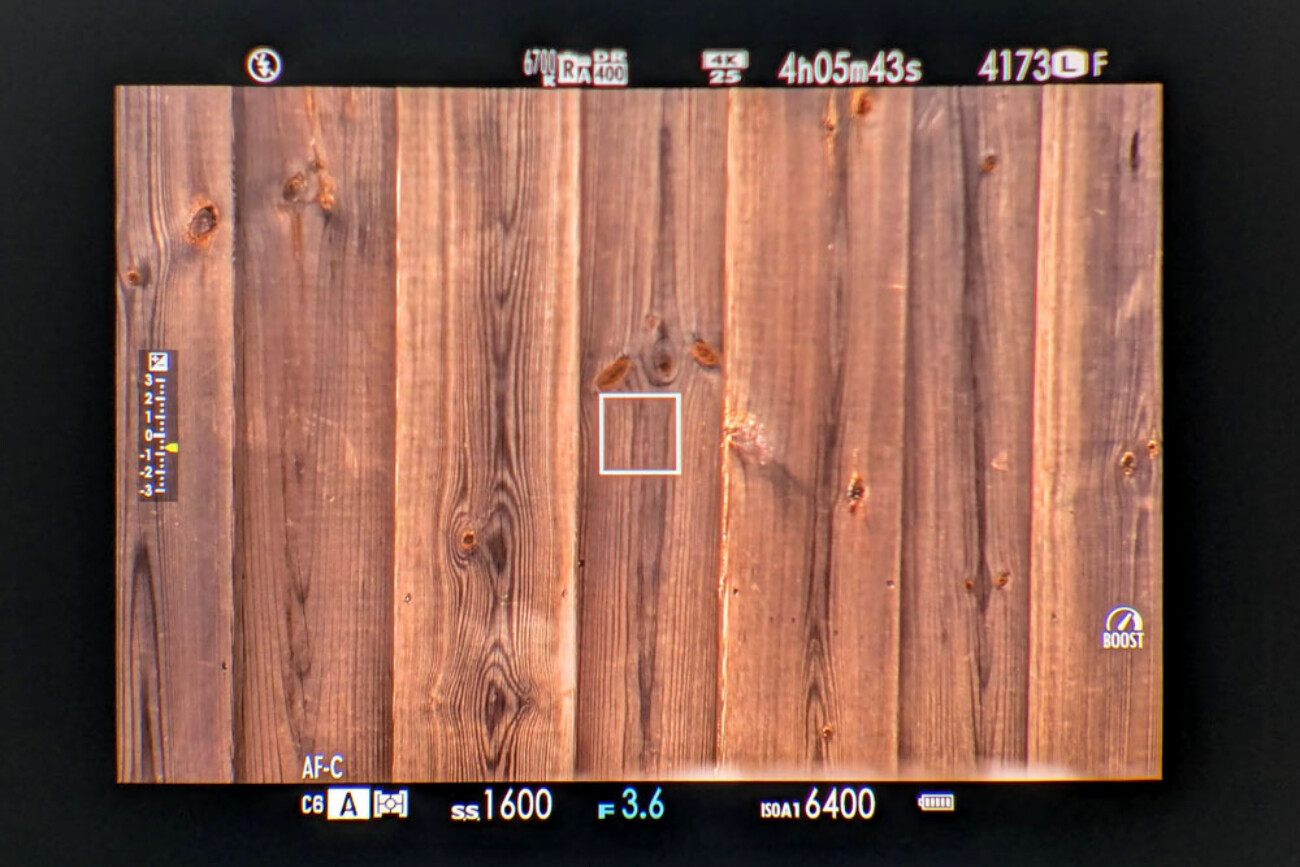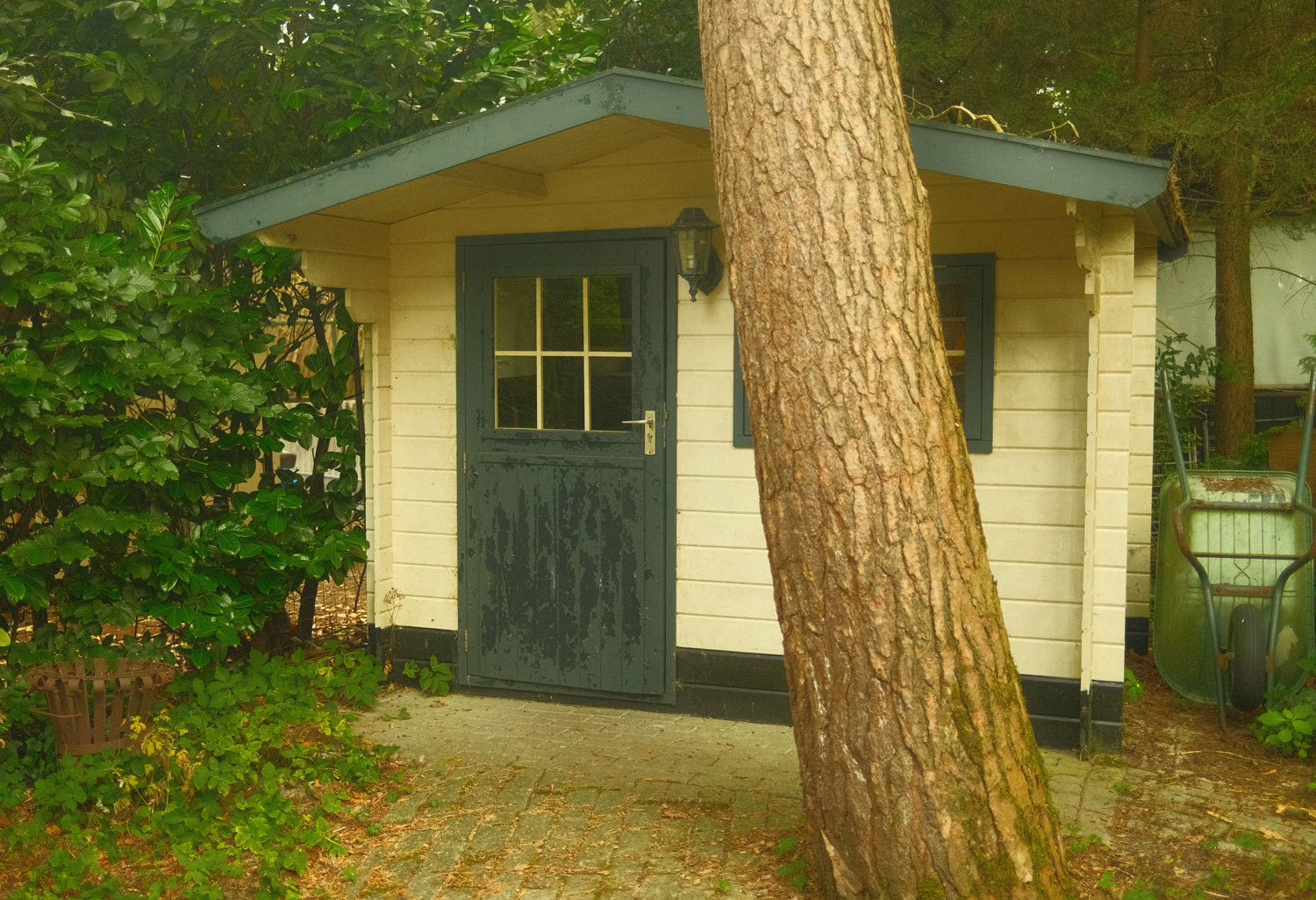I love cameras as much as I love photography — holding a well-designed camera adds something to the experience. The cold metal against your fingers, the slight resistance of a focus ring, the clicking sound of control dials, the feedback of a mechanical shutter. Holding something in my hands that’s more than a flat, rectangular piece of glass shifts me into a different creative mode. Many large cameras have these features but I’ve always been attracted to compact point-and-shoot and range finder style cameras because of their pocket-ability and discreetness. Like Batman, I also prefer my gadgets black.
Sure, I’m probably being nostalgic. But if the latest sales figures of Fujifilm digital cameras are anything to go by, I’m not alone. I’m well aware that I’m the exact target audience of their retro-inspired cameras. To illustrate this , and my decision to buy the Fujifilm X100VI, and not the new X-E5, as a replacement for my X-E4, let’s first take a (seriously long) photographic trip down memory lane. For that, I dug up my virtual photo shoe box and revisited my old Tumblr site — the place where I first wrote about creativity, technology, and photography.
My Compact Camera Journey
- 2001 — My first digital compact camera (HP Photosmart)
- 2003 — My first serious digital compact cameras (Canon IXUS)
- 2007 — “Cross Processing” on early iPhones
- 2010 — Celebrating analog imperfection (Lomography)
- 2012 — Finding Range (Rollei XF 35)
- 2013 — Digital compact comeback (Sony RX100)
- 2021 — My First Fuji (X-E4)
- 2025 — Conclusion — My New Fuji (XE-5 vs. X100VI)
- Bonus — My take on the Fujifilm X half
2001 — My first digital compact camera (HP PhotoSmart)
I’m from the mid 80s, so while my parents documented my childhood with film photography (and I really mean documented — one physical photo album for each year — so my love for cameras isn’t a coincidence) my first camera was digital. Interestingly, it was also one of the very first digital compact cameras.
I got the HP Photosmart 215 from a friend of my parents. It wasn’t very sleek, but it was mine. A chunky plastic point-and-shoot with just 1.3 megapixels, a 43mm-equivalent fixed lens, an optical viewfinder, and AA batteries that barely lasted a day. It was more like a gadget than a serious camera. But, as I discovered years later when going analog: many populair compact cameras didn’t take themselves too seriously.
2003 — My first serious digital compact cameras (Canon IXUS)
The first camera I bought myself in 2003 was a Canon IXUS V3 (or ELPH S230 in the US). For context, I also had my first camera phone by then, but that was a Sony Ericssion T610 with 0.3 megapixels. It wasn’t just the IXUS’ 3.2 megapixels that made me buy it. It was a well-built compact camera, manufactured from stainless steel with a 36mm-equivalent f/2.8 lens at the wide end of its zoom lens.
Although the IXUS had an LCD screen I remember mainly using the tiny optical viewfinder (OVF) when making photos. Not that I had a choice: the LCD screen was purely to play back images. The IXUS tiny circular glass viewfinder wasn’t fully accurate, and had just an small green autofocus indicator, no frame lines. But in my opinion, pixel-perfect compositions aren’t needed while making photographs, especially on the street. If feel that pixel-perfectionism can even negatively impact the creative process.
I loved this camera so much that I upgraded it to the IXUS 70 in 2007, which has a similar 35-equivalent focal length at the wide end, but a 7.2 megapixel sensor. Interestingly, I remember that the build quality was a step back, having just a stainless steel front but plastic back. What this camera also featured, was Live View on the LCD screen. Still, I continued to use the optical viewfinder. Holding a camera to your face makes for a different perspective and experience. The name “viewfinder” is really that: an extension of your view to find stories and compositions.
Scrolling through my archive, I see that the IXUS 70 was the first camera I used for street photography (before that, it was mainly party pics that will never be published). Looking back at these photos 18 years later, I still like them. They’re just nice. I totally understand why these cameras are so popular now with Gen-Z: they have enough resolution but are not perfect or overly sharp, just like reality is.
Here are a few of my very first street photos from a trip to Tunesia in 2009. Interestingly, even back then I never edited my photos, so these are all straight out of camera JPGs (downscaled for online preview):
The slideshow crops portrait images. Use the full screen button to see them fully.
While researching for this post, I discovered that the IXUS 70 was also the last in the series to feature an optical viewfinder. And that this was apparently an industry-wide trend. Casual photographers quickly started to rely on LCD screens for framing, especially after they got used to this after the introduction of the first smartphones. Looking through a viewfinder became something only serious photographers did, with their large SLR-style cameras that use a mirror system to look through the lens.
Although the color processing of these Canon cameras was very true to life, my photography journey took me on a path of making my photos look more surreal and distinctive.
2007 — “Cross Processing” on early iPhones
As someone who loves creative technology (sounds better than nerd, right?), I had to have the original iPhone (2G) in 2007. It changed mobile phones forever, and also photography. But this first iteration had pretty mediocre 2 megapixel sensor. In terms of photo quality, the original iPhone was even a step back from the Sony Ericsson W810i “Walkman Phone” I had before it, which had autofocus and better image processing.
Even after upgrading to the 5 megapixel iPhone 4 in 2010, photo quality was still nowhere near that from my IXUS cameras. Regardless of resolution, they just look very flat. Scrolling through my backups, I see I was already processing my mobile photos with an app called Cross Process (I’ll explain what cross processing, or x-pro, is in a bit) to make them look more analog and unique (I actually forgot about it — but it still exists! So I processed some other plain smartphone photos in this post with it, too). That was even before Instagram launched with its film-inspired filters, including X-Pro II.
The slideshow crops portrait images. Use the full screen button to see them fully.
2010 — Celebrating analog imperfection (Lomography)
Around 2010, a few years after my MA-graduation, I was working as a freelance motion designer. It was this new era where someone could just start a creative business with just a Macbook, and it was really liberating. But when working purely digital I felt (and still do) that I’m not fully unlocking my creative mind. And while I sketched storyboards and design ideas with pencil and paper, my creative process had become largely digital — delivering controlled, calculated, perfected outcomes.
So to prevent my creative brain from digitising completely, I started experimenting with film photography. I was especially attracted to Lomography, with its “don’t think, just shoot” ethos that embraced experimentation, imperfection and rawness. This turned into quite an extensive hobby of collecting vintage cameras and using them will all kinds of different film stocks. I ended up collecting many classics like the famous Lomo LC-A and the super-plasticy Diana F+, but also a Lubitel 2 and Afga Clack. I even managed to find the very Afgamatic 50 camera I was holding when I was 6.
Writing this very blog post also brings back memories of blogging about this hobby back then. And because of my activity on Tumblr (Yes, Tumblr — which still exists as my legacy blog archive) I was invited by the Lomography brand to go on street photography trip to Berlin to test and review their then latest Lomo LC-A Wide camera. Here are some photos from my Berlin trip on cross-processed 35mm slide film:
The slideshow crops portrait images. Use the full screen button to see them fully.
Besides testing different film formats like 35mm cartridges and cardboard-back 120 roll film, I also experimented with different types of film stock. I especially liked slide film stock (meant to be projected onto a screen) like Fujifilm Provia, Sensia and Velvia. These were already getting increasingly expensive then but the old gentleman at my now-gone local photo store would save expired film rolls for me under the counter, and give them for free — still grateful! The experimental fun was “cross processing” these films, which means having them developed through the chemical process that’s actually intended for negative films (C-41) instead of the correct process for color reversal slide films (E-6). If that sounds a bit technical, it basically means developing film the wrong way, to get unexpected colors that many people probably find strange but I completely dig.
Below are photos taken with the super-plasticy Diana F+ camera (a replica of the 1960s original — even the lens was plastic — zero seriousness) using Fujichrome Velvia 120 roll film stock which was then cross-processed. I found it very exciting how various film stock reacted differently to this “wrong” development process. Fuji Velvia (below) gives this warm, magenta look while the Agfa RSX (used in the Berlin shot above) or Fuji Provia lean to cooler cyan and green tones. What was also really fun is making double exposures with these cameras. That’s such a nice creative storytelling technique, which is seldomly done in-camera in the digital era anymore (did you know digital Fuji cameras have a dedicated feature for it?).
The photos below are completely unedited, medium format, 120 roll film scans — light leaks where an unexpected present then — and they are square, so you will have to click the full screen button in the slide show to see them fully.
The photos below are square — use the full screen button to see them fully.
2012 — Finding Range (Rollei XF 35)
The last film camera I added to my collection was the Rollei XF35 rangefinder (pictured in the first photo of this post). And it became the one I loved the most. I liked it not just because of the marvellous f/2.3 40mm Sonnar lens but also because its design. It’s a truly pocketable camera but unlike all other ones from my collection, it’s partially made of metal instead of plastic. And while it’s still very light at 370 grams, it’s sturdy and durable. The film advance lever makes for a very tactile experience.
The camera has a light sensor so automatically choose an aperture/shutter speed combination that correlates to the manual ISO setting. A needle in the viewfinder slides over a scale with aperture/shutter values to indicate what the camera will do (an ND filter could be attached to force wider apertures in daylight). The only thing you have to do is focus with the range finder, for which you have to align two versions of the view until they perfectly overlap (I added a photo of this later in this post). I always find this a fun way to experience photography: it’s largely automatic and simple, but still requires a tiny bit of manual adjustment and look carefully to what’s in front of you. It really makes you pay attention, immersing you into the subject.
Below is me being immersed into a subject, followed by some frames from that cross-processed roll of Fujichrome Provia 400X on the streets of Barcelona:
The slideshow crops portrait images. Use the full screen button to see them fully.
I loved the Rollei XF35 in the 2010s, but it was also very popular when it was sold between 1974 and 1980. For the context of this post, it’s good to mention why it such a sales success. Sold for around $60, it was positioned as an affordable alternative of the high-end Rollei 35 S & SE models, which sold for twice that amount. By moving its production from Germany to Singapore, Rollei was still able to deliver a partially metal body (the top and bottom are metal, making it feel premium to the touch) with a high-quality f/2.3 Zeiss-licensed Sonnar lens. Basically, it made for a budget-friendly entry into the Rollei brand.
2013 — Digital compact comeback (Sony RX100)
Besides my film photography experiments, I also kept shooting digitally. After owning a Canon 550D (Rebel T2i) for a short while in 2010, it became very clear to me that DSLRs are not my thing. I wanted to swap it for a more compact Sony NEX 5n, but ended up buying the entry-level NEX 3F (~€600 with kit lens) in 2012, which I liked even less. Even after swapping it’s enormous kit lens for a flatter, 30mm f/2.8 Sigma lens, I still didn’t like photographing with it. The all-plastic body just wasn’t nice to hold. And the fact that it had almost no physical buttons, forced a screen driven experience that I don’t really like.
Then, in 2012, I saw the announcement of the first Sony RX1. I even Tumblr’d about its looks. The physical dials, the 35mm Sonnar lens. And a full-frame sensor, meaning the same size as 35mm film. This looked like a true digital replacement for my Rollei XF35. If only it wasn’t priced €3200… (a new version just came out, the RX1 III, for a whopping €4900). So, I ended up buying and RX100 II in 2013. I believe it costed around €750. I really liked it and owned it quite a few years. It was a bit bigger than the IXUS models I used a decade earlier, but still very pocketable. The all-metal body made it nice to hold, and its Sonnar lens made really nice photos. At its wide, 23mm-equivalent end it even had a f/1.8 aperture. Which means it must have been around f/2.8 at 35mm-equivalent. I used it both for making pictures of my daughter’s early years and product photography for my 3D printing and 3D scanning blogs. It was also the camera I used for photogrammetry (photo-based 3D capture) itself. For that I would even mount it on a monopod and operate it on my phone to make elevated shots.
One thing thing I didn’t do with the RX100 II, was street photography. In all honesty, that probably had more to do with early fatherhood than the camera. The few street shots I could find look nice, but I do remember missing a viewfinder on the RX100 II. At the time, Sony sold both an optical viewfinder (OVF) and electronic viewfinder (EVF) available as a separate accessory to click in the hot-shoe, but both costed more than half of the RX100 II camera price. Likely because they where actually accessories for the original RX1, which (interestingly) also didn’t have an integrated viewfinder.
Apparently, the viewfinder-less camera trend was ending around 2014, when Sony included (pop-up) EVF to the RX100 III and later to the RX1 II. But by then my eye had fallen on the Fujifilm X100S. I was really excited about this camera, and jealous of my business partner getting one. But its €1300 launch price tag didn’t fit my hobby budget then, and other hobbies like 3D printing pulled harder.
2021 — My First Fuji (X-E4)
Six years later, in 2020, I was done with my 3D printing, 3D scanning and VR hobbies and looking into picking up street photography again. By then Fuji was also adding more vintage film simulations, which really felt like it could pick up my film photography hobby a decade later, but in digital format. So I looked into buying an X100V. But at €1500 that still felt a bit much to try out and old hobby again. What if it wouldn’t stick? What would the resell value be? (If only I knew then).
But then Fuji did something awesome: applying the Rollei XF35 strategy! They announced the Fujifilm X-E4, positioned as a stripped-down version of the X100V for just over €1000 including a 40mm-equivalent f/2.8 kit lens. It apparently missed a few buttons, and only had an electric viewfinder, but used the same sensor with all the nice film simulations. Design wise, that stripped down body as also extremely clean, with its boxy shape and straight lines. Seeing it next to the XF35 makes clear someone at Fuji must have had one. Even to the manufacturing details of making the top plate out of stamped magnesium, which is cheaper to produce than the milled aluminum top of the X100-series. I bought one in the summer of 2021.
I really liked the XE-4! It was a great entry into the Fuji X-system. I didn’t had any previous Fuji experience, so I didn’t miss any buttons at the time. I only found it a bit hard to hold in one hand. Even with a thumb grip, the lack of a front grip was noticeable. It’s compact for an APS-C camera, but a bit bigger than the Rollei and 100 grams heavier. I solved that by adding a case. Also, while the electronic viewfinder (EVF) is nice, it didn’t fully click with me. I know that’s really a personal taste thing, but it gave me more of a videography than a photography feeling. Still, for 2/3 of the price of the X100V, it was a really good deal. Especially with that marvellous kit lens. Here are some photos I took with it:
Somehow, halfway though 2023 I discovered I didn’t use the camera much. Had the novelty worn off? I’m not sure, maybe the timing wasn’t right to get into street photography again. I didn’t even get to testing custom film recipes… Regardless, I decided to sell it. Also, partially, because I could sell it for more than I bought it for 3 years earlier. Because of the X100V TikTok hype and Fuji’s stock shortages, I sold it with 20% profit. On a digital camera — crazy!
2025 — My New Fuji (X100VI, not X-E5)
I seldomly regret selling stuff. Normally, my ethos is that if I’m not using something, it’s better to sell it. I can always buy it back second hand for the same or a lower price, or a newer version at a similar price. I did start to miss my Fuji, though, and I couldn’t find a second hand XE-4 or X100V at all. But by now there was also a new generation of these cameras, with higher resolution sensors, image stabilisation and even more film simulations. So I started to explore the X100VI. But even that camera was constantly sold out everywhere. Apparently, I wasn’t the only one interested in this best-of-both-worlds digital/analog hybrid hobby. Even though this camera by now costs €1800.
To make things even more interesting, I read rumours of a possible XE-5 release. I expected Fuji to keep the strategy of positioning it as a stripped-down entry model. But instead, they upgraded it to X100-level, including build quality, and priced it exactly the same as the X100VI at €1800.
I haven’t held one yet, but I’m sure the XE-5 is a lovely camera. The film simulation dial is a nice design touch and I appreciate Fuji’s efforts to make the electronic viewfinder more analog-like with the Natural Live View mode. And if you’re looking for a range finder style camera with interchangeable lens system, it’s probably the one to get. Although, if you’re going to carry around lenses, and want to put anything bigger than a pancake lens on a camera, wouldn’t you also prefer an SLR-style body like the X-T50 or X-T5? I guess that’s very personal.
But if you’re like me and are completely fine with a fixed lens, then I believe you’re getting more value for money with the X100VI: It let’s you switch between optical and digital viewfinders (and even something in between), the lens is one stop faster at f/2.0, it has a built-in ND filter and, after adding a protective lens filter, it’s completely weather sealed (I’m writing this during summer in the Netherlands, just back from France — weather sealing is, annoyingly, nice to have). And, it has a flash. Not one a professional photographer would brag about, but surely one that helps as a subtle fill or getting that 90s family album look while using the Nostalgic Negative simulation.
So, when suddenly the X100VI was in stock again here, I decided to get that one. And after a month of use while traveling through western Europe, and I can already say I love it. If this post hadn’t made it clear by now, I definitely fall into the category of optical viewfinder lovers. The hybrid concept just works really well for me — it feels like an augmented reality instead of a virtual reality experience. I like that you can customize what information if digitally overlayed onto the optical view (even how large it’s displayed) or have it all clean with just a focus indicator “light” in the corner. Walking through a city with it really feels like the analog rangefinder experience, especially with the LCD screen turned totally off. And although it’s not technically a range finder like the XF35 where you’re dialling in the focus, using the X100VI in single point mode and using the focus nipple (probably not its actual name) to move the focus point feels similarly engaging. For me it really feels like looking at the world, instead of looking at a screen that shows how the camera sees the world. And the optical viewfinder shows so much more of that world beyond the frame lines, which helps me stay engaged and finding stories and compositions. Of course, you can still review photos if you want — both on the LCD or by quickly switching to EVF.
And one more detail: even if you totally like EVFs, it’s good to know that the one on the X-E5 is the same as the X-E4: 0.39 inch with 2.36M dots (the X-T50 also has that one) — Fujifilm did not update it match the new premium price. The X100VI, on the other hand, has a larger 0.5 inch EVF with 3.69 dots (like the X-T5). Meaning the EVF is the X100VI is 28% larger (arguably more “immersive”) while keeping the sharpness similar in terms of dots per inch. As I wrote above, the X-E4’s viewfinder didn’t really “click” with me. While I prefer the OVF on my new X100VI, the EVF is also a noticeable improvement.
Even after reading some reviews, I didn’t completely know what to expect from the “hyrid OVF” on the X100VI before buying it. I was pleasantly surprised, so to illustrate what I’m talking about above, I’ve added photos below that compares it to EVF mode. And to make this post go full circle, I also added the OVF of the Rollei XF35.
When buying the X100VI, I thought the 40 megapixels would be a bit overkill for my purposes. The 26 megapixels of the X-E4 where more than enough for me. Until I discovered the digital teleconverter (which can be programmed to the focus ring, making it act like zoom ring of sorts). It might sound a bit paradoxical to choose a fixed lens camera for JPG-only shooting and then use a digital zoom function, but in my film photography days, I also cropped some photos while scanning. Cropping and straightening is usually the only post-production I do. Being able to occasionally make an in-camera “50mm-equivalent” crop and still have 20 megapixels is a nice to have.
Looking critically though, the X100VI is not an upgrade in every way. One thing I liked a better on the X-E4 (and I believe the X-E5 is similar in this) is the lens design. The aperture ring on the X100IV’s fixed lens is really close to the camera body, making it a bit harder to grasp. Also, while in-body image stabilisation (IBIS) is great for video and low-light photography, it does add weight. While the X100VI and X-E5 are similar in weight, they’re both almost 70 grams heavier than the X-E4. Having used both, I think it’s not a huge issue, but it is noticeable when using it with one hand.
Here are a few of my first shots with the X100VI in Metz and Paris, France. This time, I wanted to dive right into the custom film recipes and ended up loading a virtual roll of Kodak Gold Max 400 — and “expired” roll even (sounds silly, but I love it!). If you clicked through my Rollei XF35 Barcelona photos, you might notice some similarities. While this recipe isn’t as extreme as cross-processed Provia, it does have that overly warm look and large film grain. My plan is to create my own recipes as well, based on the photos in this post.
The slideshow crops portrait images. Use the full screen button to see them fully.
So, that’s my reasoning: I chose the X100VI over the X-E5 because if also has an optical viewfinder, especially since they’re the same price (at least in The Netherlands, I’m aware of wild tariff-influenced price hikes on the other side of the ocean that make purchasing cameras even more expensive and confusing). Hoping this camera will really pull me back into my photography hobby.
All things considered, it must be said that these Fujifilm cameras are getting expensive. I’m very aware that by upgrading the X100VI, I’ve actually entered serious camera territory. But it’s sad that there’s now no more affordable model to get into the X-system, like the “less serious” X-E4 offered for the X-Trans 4 generation of cameras. Was there really no place for a more stripped-down (an literally lighter) X-E5 without IBIS? And with all the things that are stripped-off (OVF, ISO dial, weather sealing, flash), couldn’t it be priced lower than the X100VI? Just like the X-T50 sits just a bit under the X-T5 in terms of both specs and price.
On the other hand: both will sell anyway. And it’s probably a strategic way to make room on the lower end for new models to get people into the Fuji brand and its nice film simulation. Let’s get to that part!
Bonus — My take on the unserious Fujifilm X half
Besides the new model in the X-E series, Fuji also recently launched a completely new camera, the Fuji X half (or X-HF1). Inspired by the Fujica Half from 1963, it’s also a compact camera with optical viewfinder. It’s quite a bit smaller and lighter than the X100VI, and has a fixed 32-mm equivalent f/2.8 lens. Instead of an X-Trans CMOS APSC-sized sensor, it has a smaller, less sophisticated 1-inch BSI sensor with 20 megapixels (coincidentally, extremely similar to the sensor in the Sony RX100 II from 2013). But it does come with many film simulations and other extra creative filters like light leak, expired film and halation. And it takes the digital-film-shooting concept to a whole new level with a film camera mode that doesn’t let you preview photos on the camera at all. Instead, you have to finish a virtual roll of film, which can only be “developed” on a smartphone when it’s full.
If you have read this whole post (if you did: respect — and thanks!) then by now you can imagine that that concept makes me smile. It’s truly imaginative! And I’ll admit that I seriously added it to my purchase decision list purely on the fact that it sounds as a really fun camera to use that basically has everything I need. It does, indeed, not take itself too serious.
But it’s priced at €800, which for the actual specs feels a bit steep. On the other hand, with the XE-5 and X100IV now at €1800, it’s a relatively affordable way to try this hobby. And from a brand strategist perspective (which is my day job) it’s quite impressive that Fujifilm has build their brand so well that they can pull such a price off. According to early sales figures, it’s a commercial success so they are really onto something there. I wouldn’t be surprised if you would have to pay 20% more for a second hand one, let’s hope they can keep up with demand.
Why didn’t I buy the X half then? And save €1000 to use on… well you can do an awful lot for that (for instance, buy and develop a lot of film rolls). For me it’s two-fold: Firstly, I was already introduced to the Fujifilm brand and X-system via the X-E4 four years ago, and the X half would be a step back in image technology and build quality (wait… have I started to take my photography hobby too serious?).
I also really want to use custom film recipes and even create my own, which the X half does not support (It might be a small detail for some, but although I could use custom recipes on the X-E4, it didn’t allow naming them. The X100VI can, makes a big difference for me). Writing this post made me realise even more that I like my street photos to be more experimental, and go beyond perfectly mimicked film simulations — I cross-processed my films for a reason. I’m now experimenting with recipes called Expired Slide and Summer Sun, and saw there are also cross-processing inspired recipes.
I like where this is going…
Secondly, as the name implies, the concept is that this camera simulates “half frame shooting”, which in analog film terms was a technique to shoot twice as much photos on a single roll of film (saving 50% of the costs), by shooting smaller, portrait-oriented frames instead of horizontal ones. The X half take that so far, that the actual sensor and LCD display are oriented vertically. Which is probably no big deal from people coming from smartphone photography, and actually preferred by people that mostly post on social media. But my photography brain (and the human brain in general, for that matter) is really oriented in horizontally by default. Having to hold it sideways to make landscape photos sounds counterintuitive. So that’s a deal-breaker for me. Although the diptych feature, that let’s you stick two subsequent photos together in one frame by using the physical “film advance” lever (like the one on the Rollei XF35!) is truly clever and a powerful storytelling technique. It can also do double exposure.
So to tie everything up: Fujifilm did indeed pull a Rollei XF35 move in 2025, only not with the X-E5 but with the X half camera. A clever new entry into its successful retro-inspired camera brand. I will probably not buy it, but can’t wait to try it. Hoping to get lucky and find a store that will have one in stock soon to test.
So that’s it — end of roll — time to rewind and develop.
Thanks for reading, and feel free to leave your thoughts in the comments.


